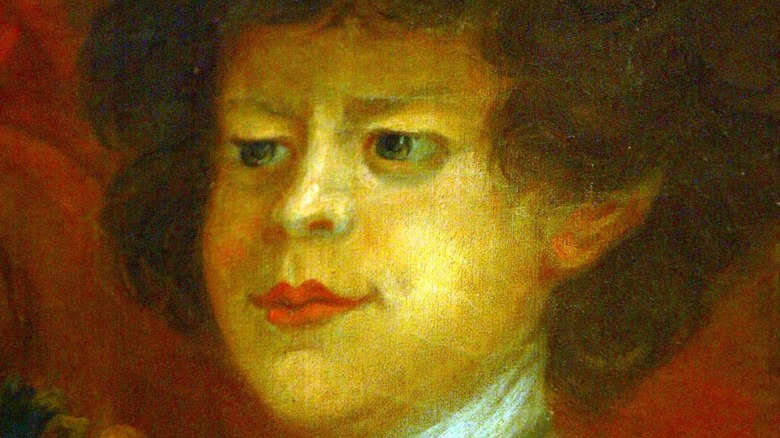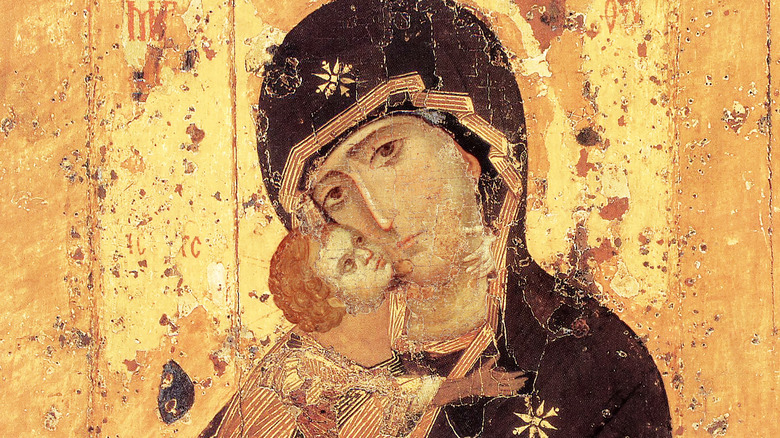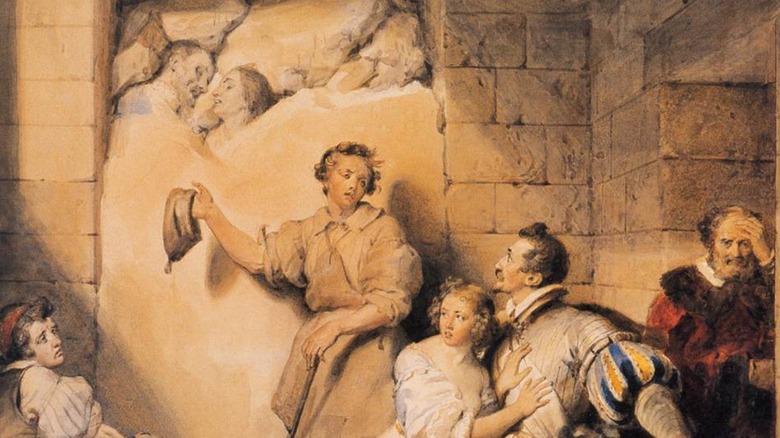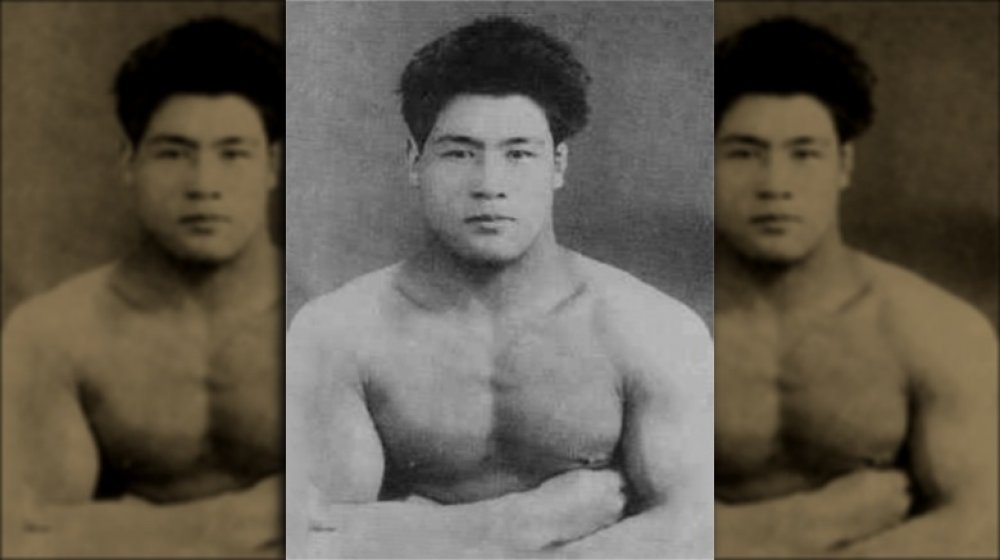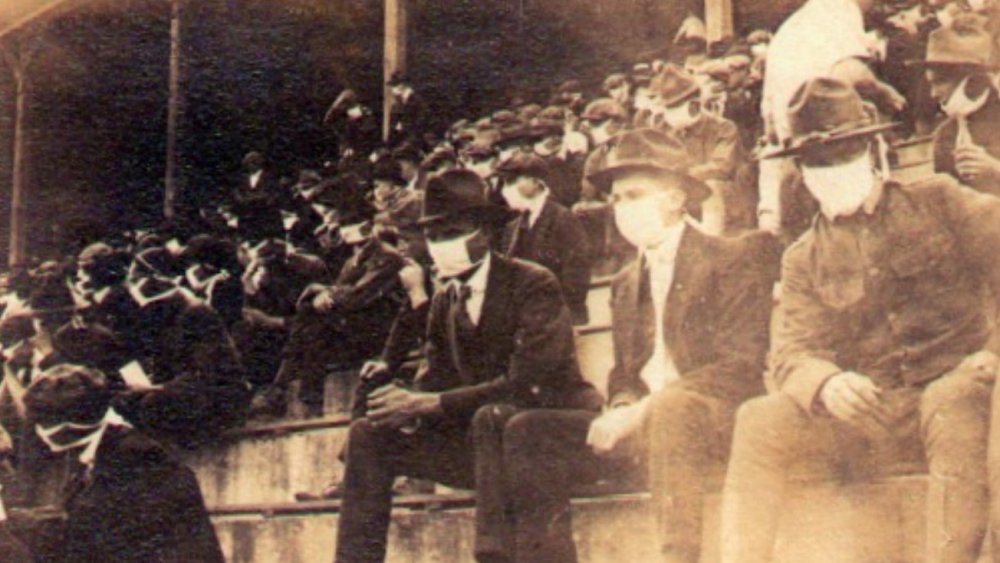
Honest Depictions of History’s Greatest Figures
Reimagining great historical figures is really difficult. Unfortunately Queen Elizabeth I wasn’t walking around taking selfies so we just have to rely on paintings and sculptures. Thanks to the crack teams of forensic anthropologists and a whole load of CGI, these historical figures, among many others, have been given the treatment of facial reconstruction. With this stunning technology, historians are now able to see just exactly how handsome Julius Caesar was! It also reveals that despite Bach’s beautiful music, he didn’t have a face as lovely as his compositions!
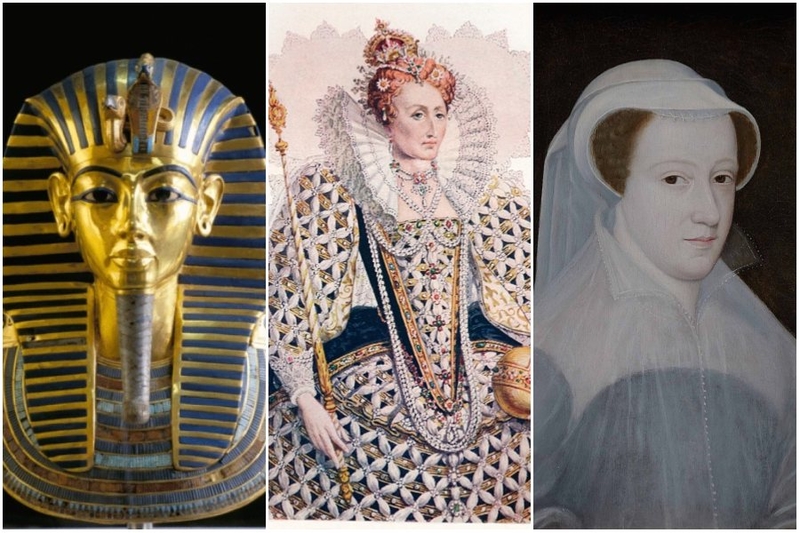
Being able to bring those famous faces to life, and into the twenty-first century, is a credit to these expert teams, along with the help of a number of historians! So it looks like CGI, CT scans and 3-D printing have been able to give us all a glimpse into the past. Be prepared there are some good, some bad, and some that well… you might just want to cover your kids’ eyes. Time to take off that plaster mask and uncover some of history’s biggest mysteries!
Nefertiti
The bust of Nefertiti is probably the most represented and most copied of all of Ancient Egypt’s leaders. A symbol for feminine strength and leadership, her profile is worn proudly on the bodies of women to this very day. Reigning alongside her husband the Pharaoh Akhenaten until his death in 1336 B.C., there is overwhelming evidence that the Queen of Egypt ruled independently after he passed over into the afterlife.
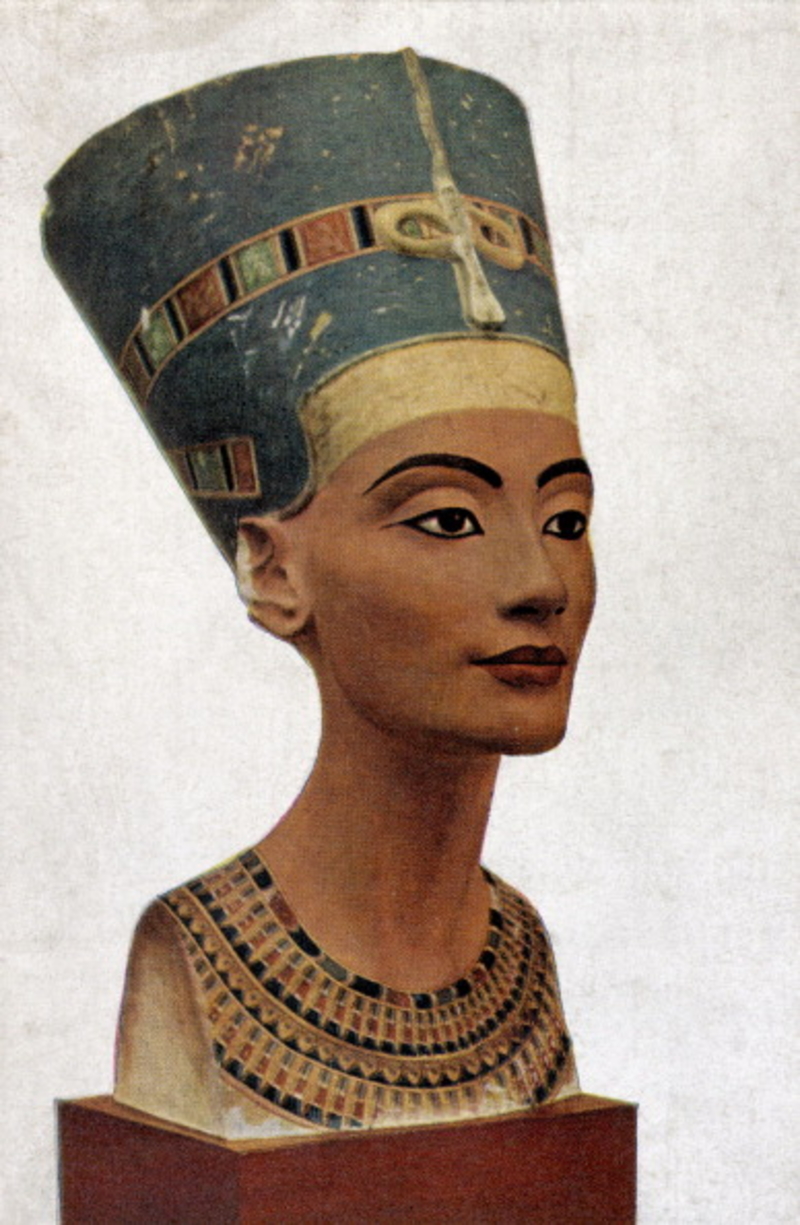
Where other queens were kept quiet and not as celebrated, Nefertiti was often depicted in Egyptian art as holding positions of power. Like King Tutankhamun, Nefertiti became even more famous posthumously, after archaeologists discovered a statue of her, even if it had crudely fallen and was buried upside down in the sand! The bust, pictured above, was discovered by German archaeologist Ludwig Borchardt, in 1913. The depiction reveals a beautiful woman with a graceful neck, fine features, and high cheekbones. Basically, a supermodel of the ancients! However, in 2009, researchers conducted a CT scan of the bust, revealing that underneath the beautiful representation, there was a completely different face shown!
What Lies Beneath
Hidden inside the stucco surface which had been decoratively painted with Nefertiti’s likeness, was a gem – perhaps it was for the queen to take into the afterlife for payment of some sort! But if it were us discovering that bust, we’d leave it alone – haven’t any of these archaeologist’s seen “The Mummy”? Sheesh! Sculpted by the talented Thutmose, there was yet another hidden layer – a separate bust of Nefertiti underneath the stucco exterior, except this was more special, being made of limestone. Following a series of CT scans and digital manipulations, the face of the renowned queen was unveiled.

She was still just as beautiful as she had been painted and described, just with a couple more wrinkles and a slight bump in her strong Egyptian nose. But there was more to this amazing woman she mothered six children, with one of these going on to become the mother of King Tutankhamun. But we’re pretty disturbed at the ugly truth – King Tutankhamun’s father is none other than Akhenaten, Nefertiti’s HUSBAND! So yes, that would mean Akhenaten impregnated his own daughter. Okay, that’s just not on at all. But this knowledge is extremely telling – it explains the reasons for the deformities that hampered the young king-to-be.
President George Washington
Born George Washington in the year 1732, little did he know that he would be one of the most famous American political leaders and military generals in history. A Founding Father, he served as the first President of the United States of America, holding office between 1789 and 1797. He led the Patriot forces to victory in the War of Independence and helped establish the federal government. Quite accomplished in his lifetime, if you ask us! The Virginia-born former British soldier was the guiding hand which helped to form the United States of America. Above, you’ll see the face of George Washington as he was painted back in the day!

This particular image was saved just in time by First Lady Dolley Madison in 1814, after the British burned down the President’s Palace, a building which you’ll know today as the White House. Lucky the First Lady saved it, because really, it was what researchers were going off to reveal what Washington looked like back in the day!
The Face of a Founding Father
There’s nothing quite like stepping down at the height of your popularity eh? Unlike many who are booted that hang their heads in shame, Washington took his leave when people were begging him to stay on! He would’ve easily won a third term in the Oval Office, but decided to hang up his boots early. In doing so, he set a precedent of a two-term limit in office, which prevented the U.S. from being too easily controlled.
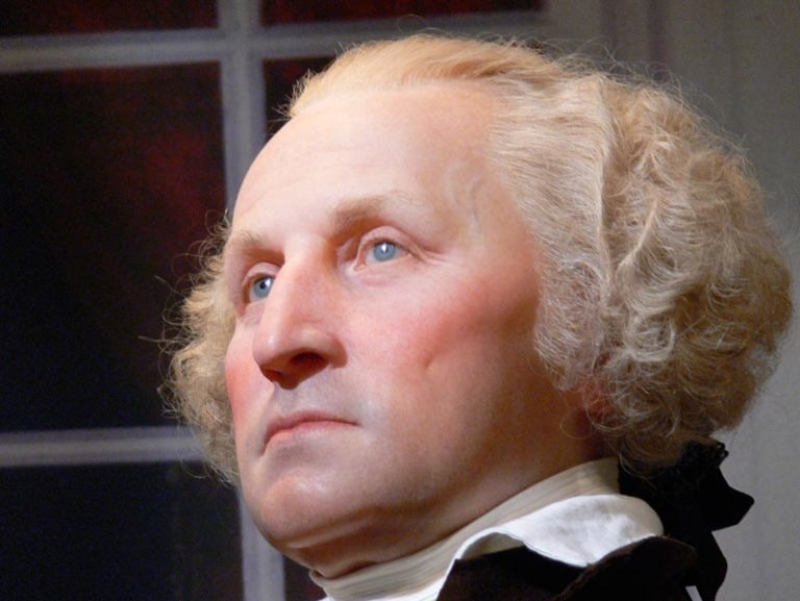
The image you see here was created by a team of researchers from New Jersey Medical School in Newark, purportedly revealing the true likeness of the Founding Father’s face! It really is quite amazing to see just what this team has come up with – the detail is incredible! From his fair skin to the fine stubble on his face, not to mention the piercing blue eyes, this team makes him look well, really real.
Good Queen Elizabeth
Reigning over England from 1558 to 1603, this woman is most famous for “doing a man’s job.” At the time, it was unheard of for women to be in positions of power, but it is argued that she did a better job than her predecessors! She is known for her statement before her subjects “I know I have the body of a weak and feeble woman, but I have the heart and stomach of a king and a king of England too.” Ah-huh honey!
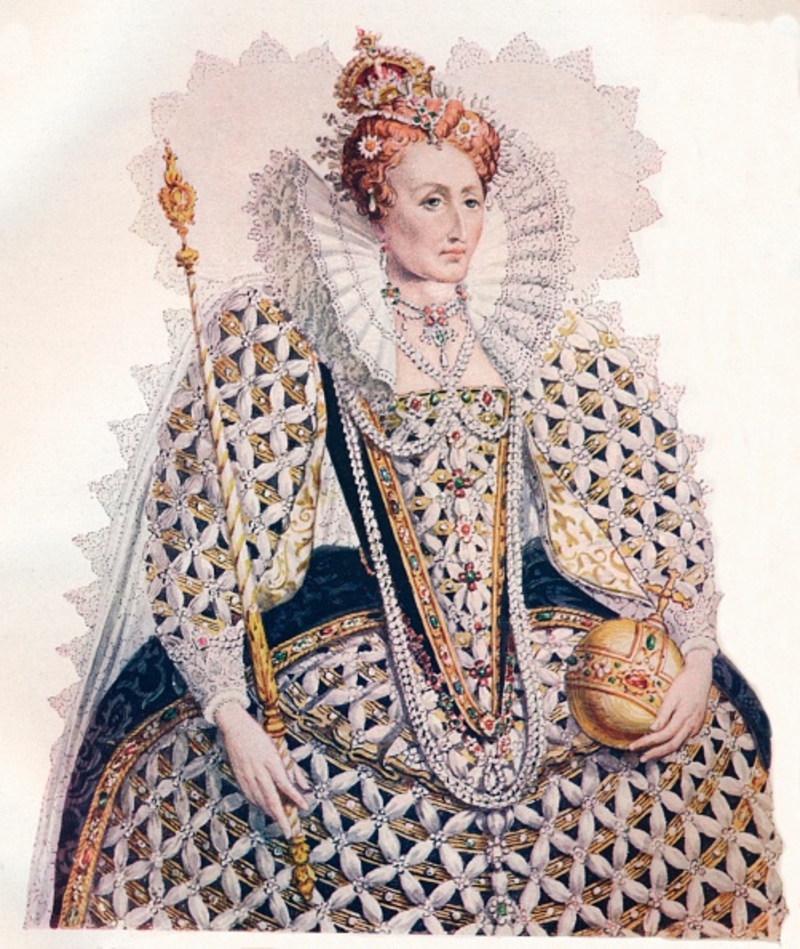
She was just 25 when she was crowned Queen of England, which is ironic considering her father’s best efforts to secure a male heir. Her father had six wives to procure a son, however, it was meant to be for a woman to rise to the throne, as she took the reins after her siblings died. In her 45 year-long-reign, Elizabeth I never married! It is for that reason that she was given the title “The Virgin Queen.” Being royalty, only commissioned portraits were ever released, which masked the truth of her appearance. Not to mention tonnes of white makeup! Naturally, it made historians curious, so what did she actually look like? Well, artist Mat Collishaw took things a step further and has revealed an image of the Queen!
See Her Royal Majesty
It seems that England merely needed a woman’s touch to settle differences which plagued the country. Whilst she may have been excommunicated by the Catholic Church in 1570, she managed to settle rifts which had long preceded her! She was triumphant in her reign, defeating the Spanish Armada in 1588, and kept a watchful eye over the arts and literature. If you’ve seen Shakespeare in Love, you’ll see the short cameo at the end with Dame Judi Dench appearing as Queen Elizabeth I, attending a performance of Romeo + Juliet.

3D printing, hand-in-hand with CT scans, allowed Collishaw to create an animatronic version of Her Majesty’s face, which even blinks! Kinda creepy if you ask us, and it almost looks like she’s…well, thinking? Yeah, we’ll pass! Collishaw shared that the inspiration for her facial features was drawn from the Armada portrait at the Queen’s house in Greenwich, London!
King Tutankhamun: The Young Sun King
The ruler of Ancient Egypt between 1334 and 1324 BCE, King Tutankhamun is one of the most heavily documented and heavily investigated pharaohs of all time. The boy pharaoh ruled for a period of 10 years, from the alarmingly young age of just 9 years old. He passed away just before his 19th birthday. These days, 30-year olds barely have it together, let alone having a kingdom to rule! It is quite astonishing when you think of it that way! But King “Tut” would’ve just been a relic if not for the discovery of his tomb in 1922. Howard Carter came across the incredible golden sarcophagus which contained the body of the young king.
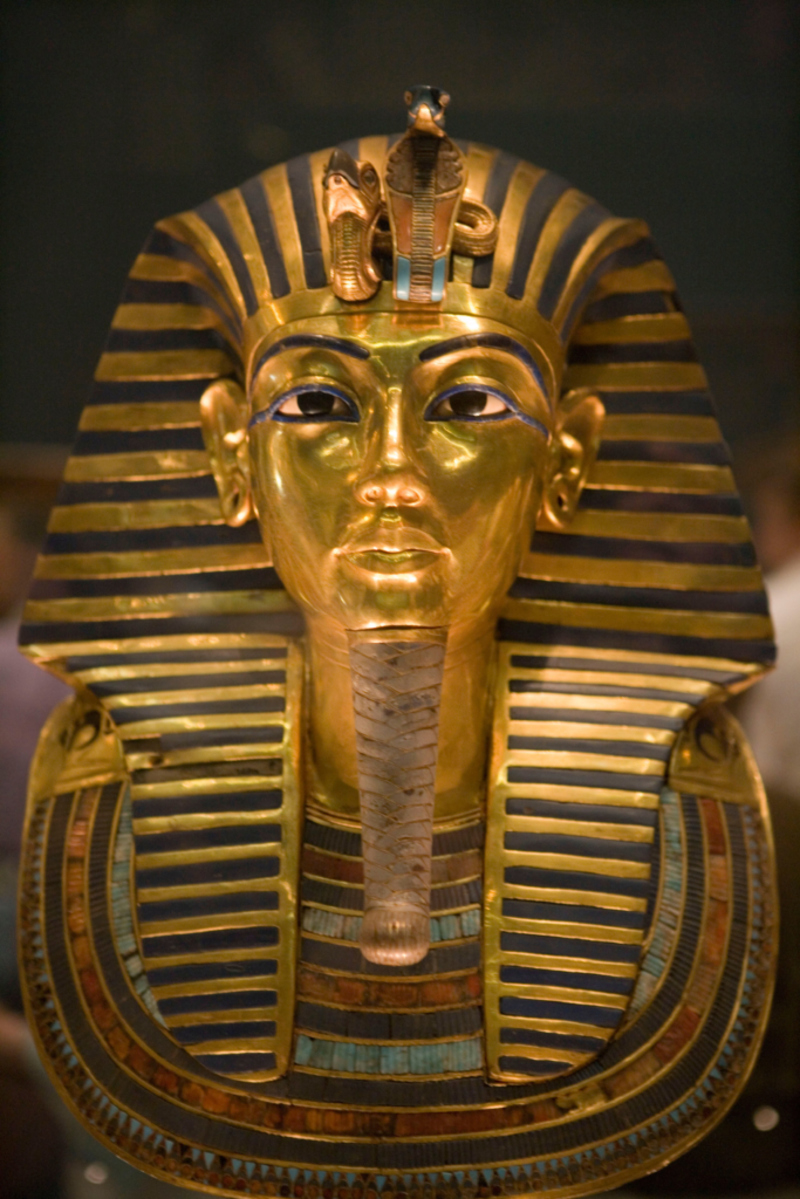
With the help of modern technology, we now have an impression of what Tutankhamun would’ve looked like back in the day. But it wasn’t an overnight exercise; nor was it cheap! Scientists and researchers dove deep into government grants and funds raised to analyze King Tutankhamun’s genetics. They conducted CT scans as well as completed over 2,000 digital scans. The results were quite shocking; Tutankhamun was less of a king and more a troubled product of inbreeding. It was found that the boy had an overbite with a sickly and frail demeanor, which is most likely part of the reason for his death. But this was only the beginning for experts analyzing young King Tut!
For King and Kingdom
You might think it’s absurd for a nine-year-old to be given the reigns to a kingdom which stretched far and wide. We’d be uncomfortable if a kid had say over the law of the land we were living in! However, his reign was cut short, despite his youth. Ruling for just ten years, it was found the cause of death for the 19-year-old Tutankhamun was in fact malaria. Not to mention the fact that he had a host of physical problems; a fractured lower leg, and congenital deformities. It seems that for the supposed “pure blood-line” of the Ancient Egyptian elite, this claim couldn’t be further from reality.

The royal family, like others before them, believed it was only proper to keep the bloodlines pure – by only breeding within the family. But Tutankhamun’s clubbed left foot is one example of how “keeping it in the family” could be detrimental to the strength of future pharaohs descended from this line. But this was just one of the issues that the young king suffered – following modern interpretations and models of Tutankhamun’s body, it seems that his hips formed improperly, and he was particularly susceptible to malaria infections. As you now know, it was this particular ailment that took the young king to the afterlife. It seems that the scribes of the courts detailed his fragility, as he is the only pharaoh depicted as sitting down whilst performing archery. If not for modern technology, we would’ve never known the truth about the boy king!
Mary, Queen of Scots
The only surviving, legitimate child of King James V of Scotland, Mary Stuart was just six DAYS old when she ascended to the throne. Scotland was largely ruled by regents whilst Mary was raised in France. She married at 16 and then following the Dauphin of France’s death, she returned to Scotland, in 1559.
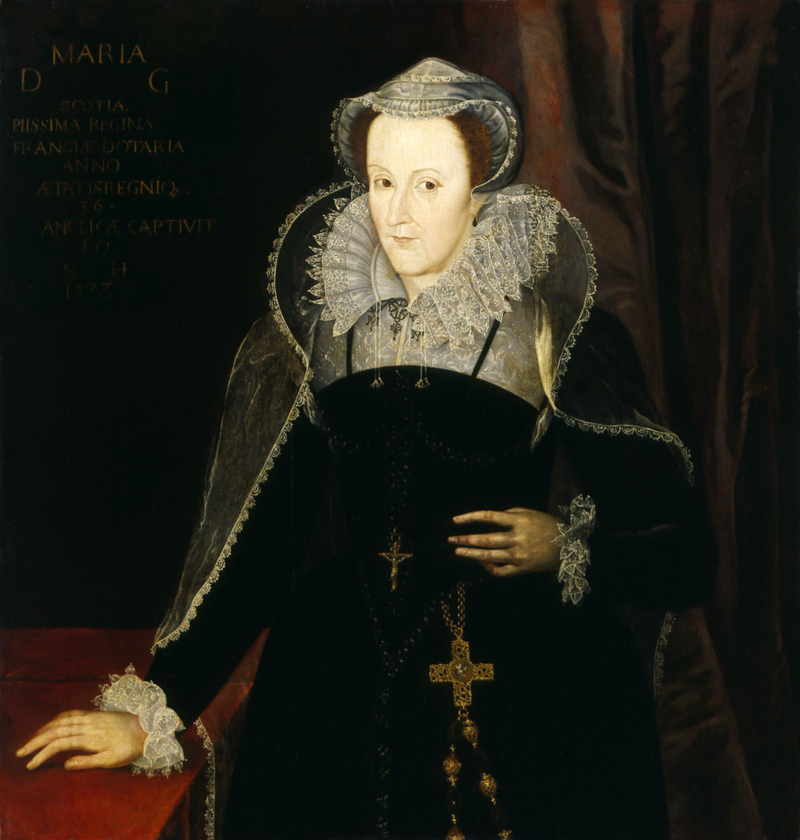
Professor Caroline Wilkinson of Dundee University, whom you might remember as the co-instigator in re-creating Shakespeare’s face, is once again bringing those lost to history, back into the future. Using paintings and drawings of Mary, Queen of Scots was brought into the modern day with the help of modern tech! Wilkinson created the closest possible likeness for Mary, using biographical information to get past the stylized versions that are most commonly seen.
The Queen In All Her Glory
The Royals liked to keep things close – did you know Mary was cousins with Queen Elizabeth I? The two at first were like sisters, with Elizabeth accepting her cousin into England when the Scottish aristocratic class revolted and took away her ability to rule. But it seems that Mary got a taste for power and was entangled in a plot to overthrow her gracious cousin Elizabeth. If anything, she’s lucky she wasn’t executed – but she did spend 19 years in prison, and of course, stripped of her royal title and claim to the throne. You’d think you’d learn your lesson after 19 years in jail, but it seems that Mary was still a little sour – she got involved in yet ANOTHER plot.
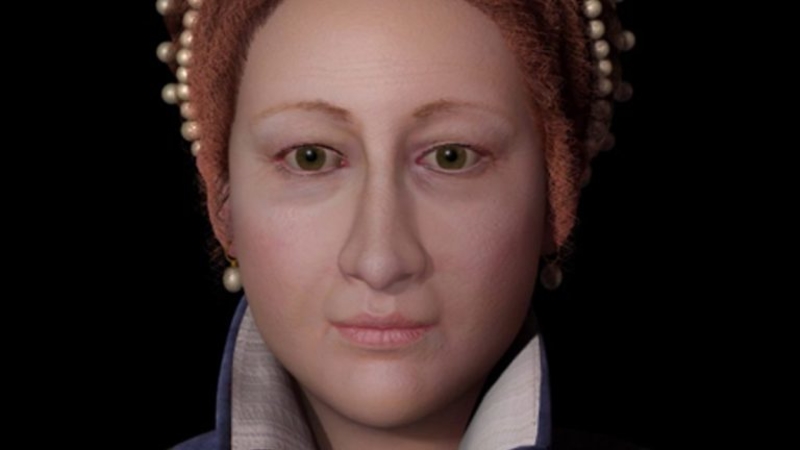
Elizabeth could be fooled once, but the second time around she wasn’t quite so forgiving. And “off with her head” became a real thing. The depiction that Wilkinson came up with shows Mary in her early 20s – or what she would’ve looked like, seeing as though there was no surviving portrait of her from that time.
Emperor Nero: Jack of All Trades, Master of Some
All hail Nero Claudius Caesar! The Emperor of Rome between 54 and 64 A.D., Nero is infamously remembered for his madman antics – even to this day, few can touch the atrocities of this psychopathic Emperor! We kinda feel sorry for the people of Rome – not only did he have a chinstrap beard, but he was terribly oppressive.
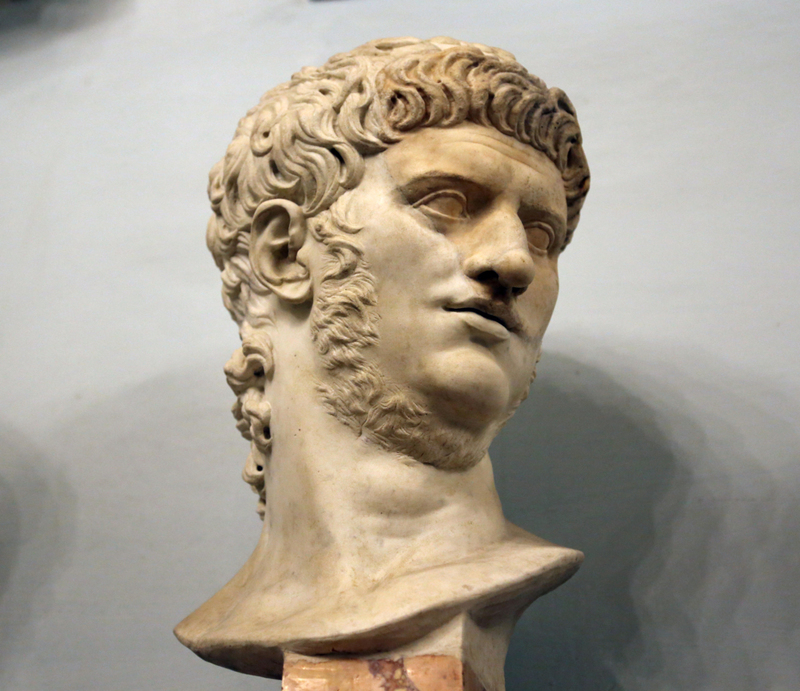
During his reign, he committed terrible atrocities, which of course took him out of favor with the Romans whom he ruled. But whilst he was the most hated man in the Empire – and possibly the most hated of all the Emperors to preside over Rome, there are some stories which come to us today, speaking of a number of talents he possessed. An accomplished singer and musician, Nero played the lyre often. Not simply a man of the arts, Nero worked on his physical self and trained to become a finely-honed Olympian. Who would’ve thought – brawn and er… well, not exactly brains, but an er…sensitive side? Now you might be envisaging a gorgeous athlete, but thanks to modern technology, you’ll find this man was rather displeasing to look at.
Nero Did a Bad Bad Thing
It’s simply amazing how technology has provided us insight into the past, as well as how humans have evolved and faces, have changed. This recreation of Nero is spookily close to the writings describing the Emperor, we’re actually a little worried! With a fierce quality to his face, his steady gaze demonstrates this guy meant no nonsense! It was his way or the highway. Famous for his debaucheries, political murders, and persecution of Christians (he himself was a pagan of course!), he was, of course, the Emperor who watched Rome burn, and rebuilt it! In 64 A.D. a terrible fire decimated the city. Do you think Nero cared? Well, apparently, he sang from the Greek epic “The Sack of Ilium” atop his palace roof. It’s rumored that the Emperor started the fire himself, to expand his palace complex! Regardless of whether this was true or not, many people died, and the damage was extensive. And what better scapegoat than to blame the fledgling Christian religion?

Eager to return Rome to its former glory, Nero sucked all the funds out of the Roman treasury. But it wouldn’t be complete without a 100-foot-tall bronze statue of himself, would it? We’re actually starting to really hate this guy. It’s no wonder the people of Rome revolted! But being the coward he was, he took his own life, declaring “What an artist dies in me!” Yeah, good riddance!
Robert I
Robert I, known more popularly as Robert the Bruce, is another whom historians and archaeologists have brought back to life by way of modern technology. Sure, Robert isn’t exactly looking as dapper as he ought to be as per the image below, but this cast was made from his actual skull, which was unearthed some 200 years ago when his burial site was being rebuilt! This cast, from Robert’s skull, has become the basis from which historians have pieced together his apparent appearance!
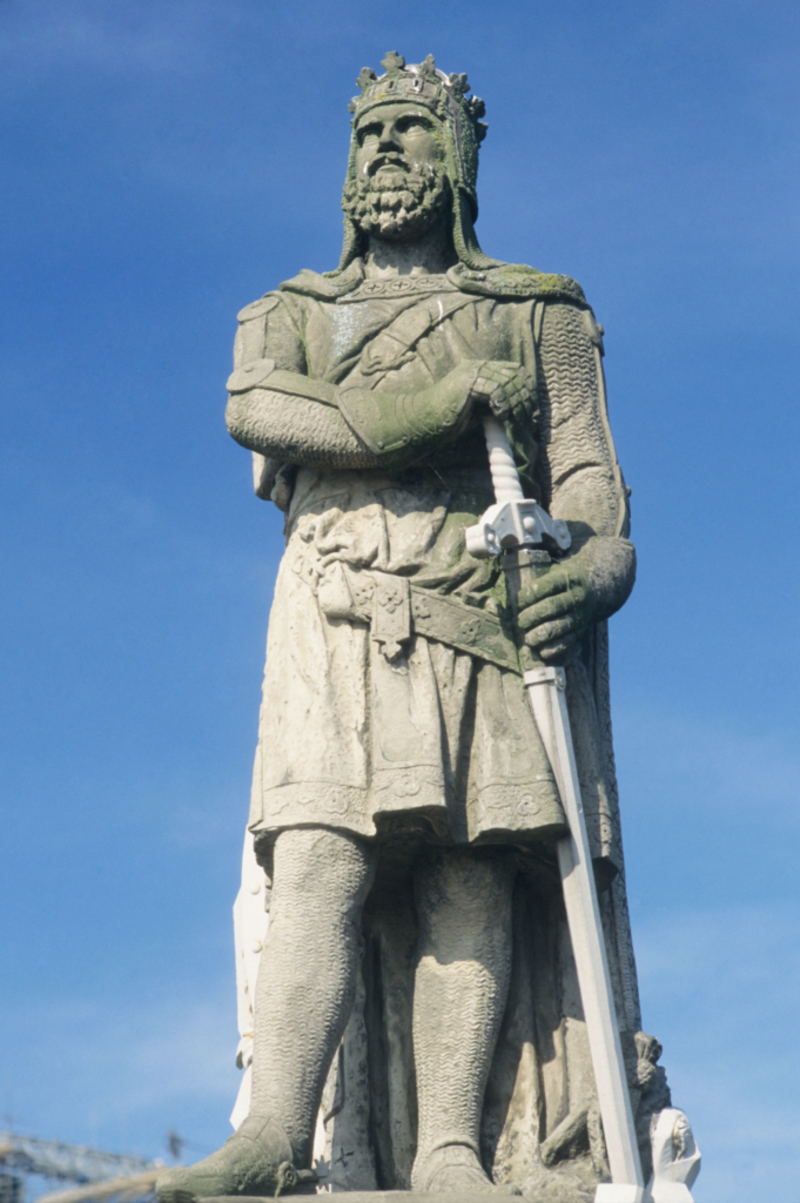
Taking the throne in 1306, Robert rose to be the King of Scots, until his death in 1329. At the time, King Edward I declared Scotland as being part of England rather than being autonomous. In 1314, the mighty army of the Scots defeated an English army at Bannockburn, which allowed the Scots to continue living freely, outside of English rule. He is remembered as one of the most famous warriors of his generation, going on to lead Scotland during the First War of Scottish Independence against England.In late 2016, researchers from the University of Glasgow were curious to see if the Face Lab specialists from the University of Liverpool could reveal what he may have looked like!
Unveiling The Face Of A Natural Leader
Leading the project to recreate Robert the Bruce’s face, Dr. Martin Macgregor of the University of Glasgow commented, “I don’t think it’s going too far to say that unless Bruce had succeeded [at Bannockburn], we might not be sitting here today talking about a Scotland.” So for the people who call Scotland home today, Robert the Bruce is a pretty big darn deal. The project took two years to complete, following painstaking work and considerations from the teams involved.

The cast, modeled on the discovered skull, enabled researchers to work out the exact structure of his face, from the muscles on his face even to eye color. Okay, maybe not eye color – they had to have a bit of a guess at that! Evidence also suggests that at the time of Bruce’s death in 1329, he was possibly suffering from leprosy, which makes this model version somewhat redundant. But hey, at least it means the people of Scotland can put a face to a name!
Cleopatra
Tales have been told and songs have been sung of this mysterious and alluring woman. She even had a few feature films made – who can forget Elizabeth Taylor’s portrayal of arguably the greatest woman to watch over Egypt? Reigning as co-regent over the Kingdom of Egypt for 30 years, this Egyptian minx was extremely intelligent and a polyglot. Of course, every story told of Cleopatra highlights her great beauty. Well, who else could’ve stolen the hearts of Roman generals and enchanted men all over the world? The slight problem with this tale of Cleopatra is that there was a high possibility that she was not perhaps as beautiful as it was originally imagined.
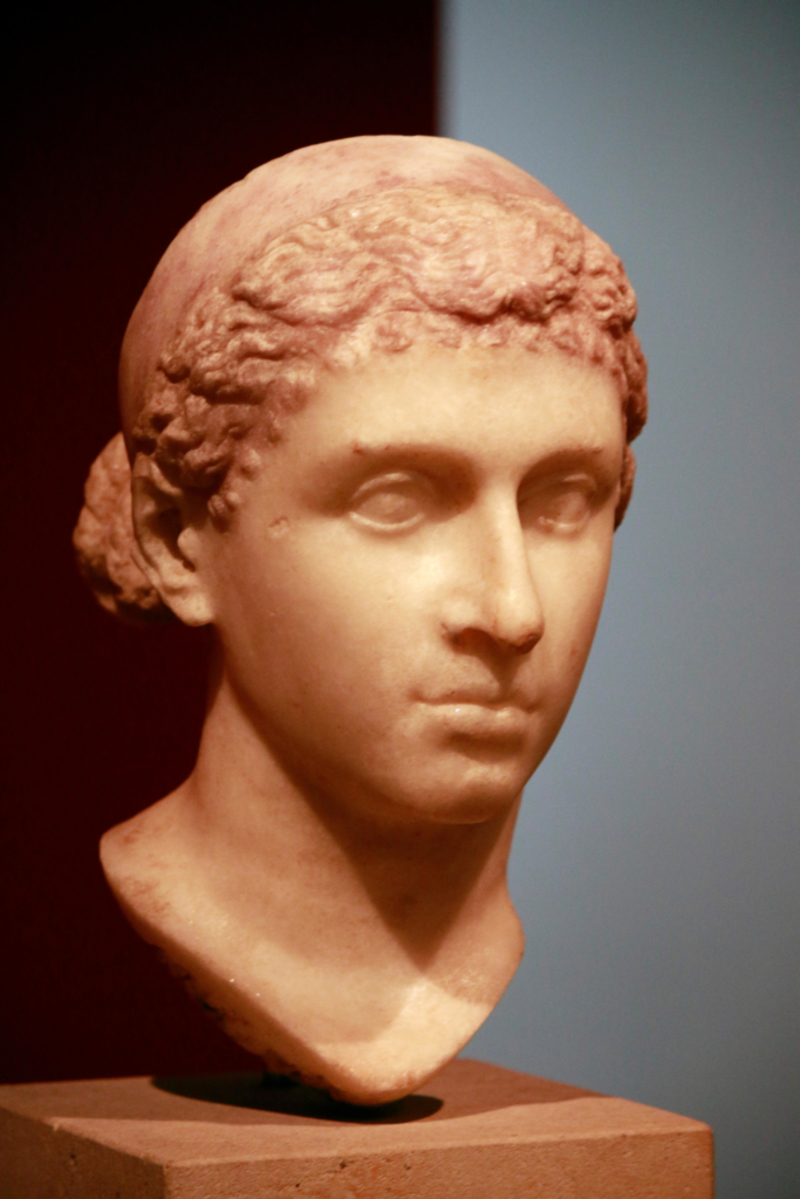
Some busts of this leading lady portray a stunning creature unlike any other woman before her, which is in stark contrast to their more modest counterparts, such as those housed in the Altes Museum in Berlin. Despite bewitching two of the ancient world’s most influential leaders, it seems that it was Cleopatra’s brains that made her so intoxicating. So it seems that the modest depiction is truer to reality than the tale of her possessing a wondrous beauty.
Maybe She Was Born With It, Maybe It’s History!
The marble bust of Cleopatra, created between 40 and 30 B.C. is believed to be the most accurate representation of the fabled woman. Cross-examining artwork with the bust reveals the same hairstyle and similar features, however, this could be just an example of how women were depicted during the time. She sported the “melon hairstyle” which was typical of Ptolemaic queens – as shown on coins and artworks which were dedicated to Cleopatra herself.

M.A. Ludwig created his version of Cleopatra too as we can see here, and she is imagined as having a strong nose with almost masculine-looking features. It sure is telling, as it highlights the fact that she must have been quite the intelligent seductress, using her cunning to charm Rome’s greatest men. It just goes to show that beauty isn’t necessarily the only way to charm people in life – and it’s no new phenomenon because well, Cleopatra lived thousands of years ago! What a woman she must’ve been!
Julius Caesar
The most famous of the Caesars to rule Rome, Julius Caesar rose to prominence in ancient Rome due to his military prowess, expanding Rome’s territories far and wide, so that it became the largest empire in the known world. Successful campaigns were waged in all directions, winning him battles across the European continent. In 60 B.C. he formed the First Triumvirate through diplomacy (well, additional to quite a bit of bloodshed and persuasion with his armies), with fellow prominent Romans, including Crassus. In 50 B.C., Triumvirate member Crassus was killed during the battle, which led to a catastrophic battle between the two remaining members.
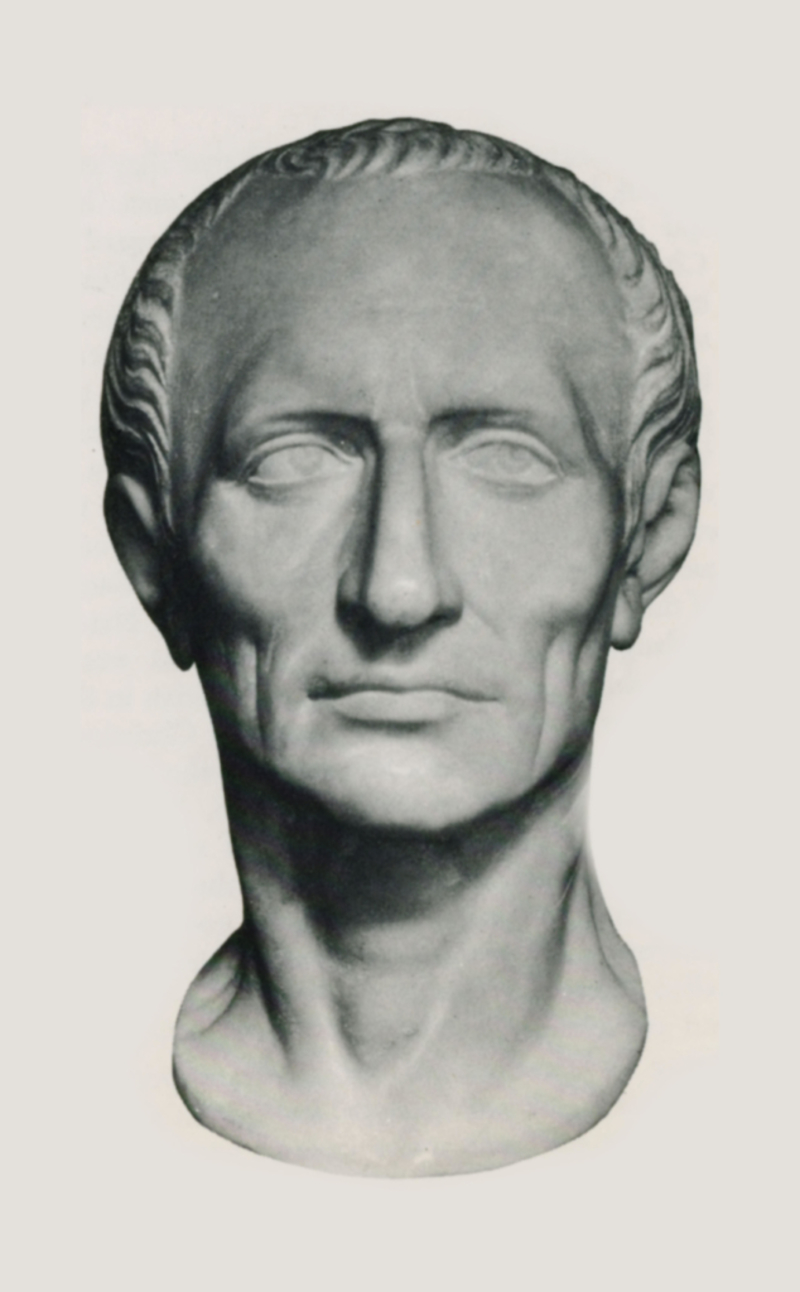
What ensued between Caesar and Pompey the Great was a battle which would decide the fate of Rome. The bust pictured above was scanned by archaeologists and anthropologists Maja d’Hollosy just last year, in order to get closer to forming a proper image of what Caesar may have looked like, all those years ago!
All Hail Caesar!
Whilst Pompey may have indeed been aligned with the powerful Senate, Caesar managed to control the Roman empire singlehandedly, following the victory at the Battle of Pharsalus in 48 B.C. Caesar, despite being in a weak position with only 22,000 men and startlingly low provisions, he managed to earn a victory. It seems that Pompey was spurred on by senators, but played his hand too quickly, which led to their defeat. The ashamed Pompey fled the camp, disguised as a regular citizen. As for the ending of the battle for the Mediterranean, well, any history buffs will know it ended with a salacious affair with Cleopatra and then death by stabbing on Ides of March some years later. Talk about a Roman tragedy.

The bust of Julius Caesar which is housed in the Rijksmuseum van Oudheden in Amsterdam in the Netherlands was used conjointly with another bust to create the image you see above, which reveals the face of this great Roman Emperor. With a large head and forehead, his face seems almost disproportionate! Anyone who’s interested in seeing it up close? Well, you can pop over to the Dutch National Museum of Antiquities for your selfie.
William Shakespeare: Playwright, Philosopher, Pretty Face?
Arguably the most famous and prolific playwright in history, his writing spanned a number of years, before his life was cut relatively short, passing away in 1616. Fun fact: he is the best-selling fiction author of all time, with an estimated 4 BILLION copies sold!! England’s national poet coined a number of famous terms and expressions which we still use today, like: “night owl”, “full circle” and lines like “all that glitters is not gold.” Well said, Shakespeare! The man behind Romeo and Juliet, Hamlet, Macbeth, Julius Caesar, A Midsummer Night’s Dream and so, so many others, it’s likely you would’ve studied his works at some point in high school!
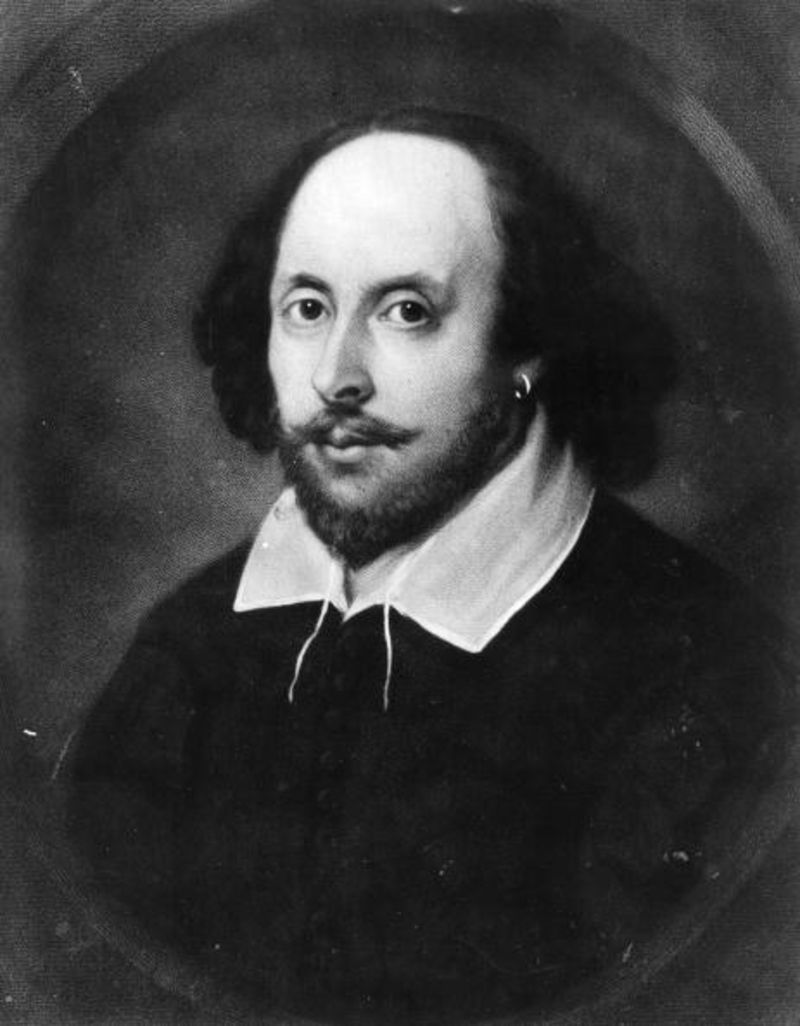
The drawing you see above is the most commonly seen illustration of Shakespeare, but this didn’t satisfy Shakespearean enthusiasts! This particular engraving/etching was completed by the Scotsman James Faed in 1853, which shows Shakespeare surrounded by his plethora of works!
(We) Look Not With the Eyes, But With the Mind
The man who put the Globe theatre on the map and really, lifted the English language and was responsible for its development, Shakespeare stunningly was the son of an English farmer! A man with a way with words unlike any other, his legacy is astounding. But as for creating his likeness with modern technology, it was decided to use Shakespeare’s death mask to create the image of what he really looked like!
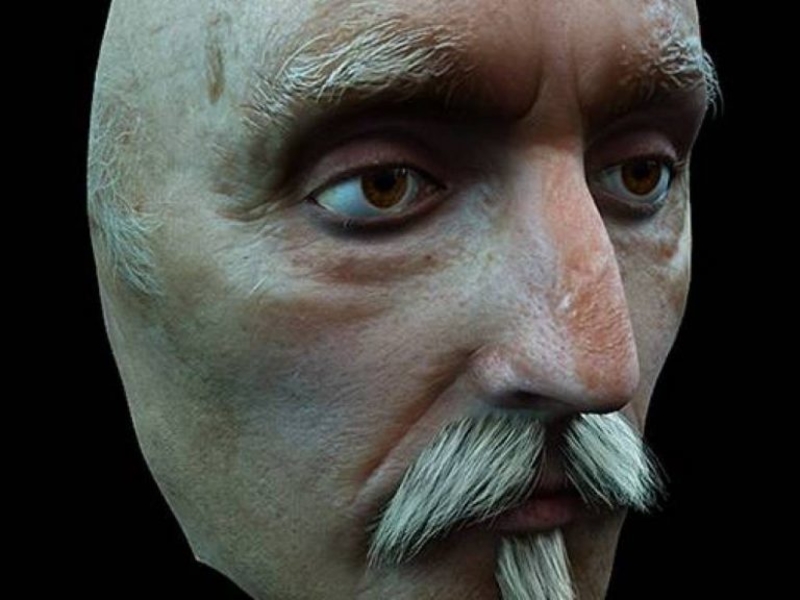
Dr. Caroline Wilkinson from Dundee University used modern technology to scan the interior of his death mask to help create the 3D image of Shakespeare at his death in 1616. Therefore, the image above is of an older Shakespeare – we’re slightly irked at how real it looks, down to the last wart on his aquiline nose.
Richard III: King of England, Lord of Ireland
The last Yorkist king of England, Richard III was King of England for just two years. Poor Richard was always portrayed as a tyrant, particularly if you read Shakespeare’s play of the same name. His death during the Wars of the Roses marked a significant turning point in English history; it marked the end of the Plantagenet dynasty and the beginning of the Tudor age.
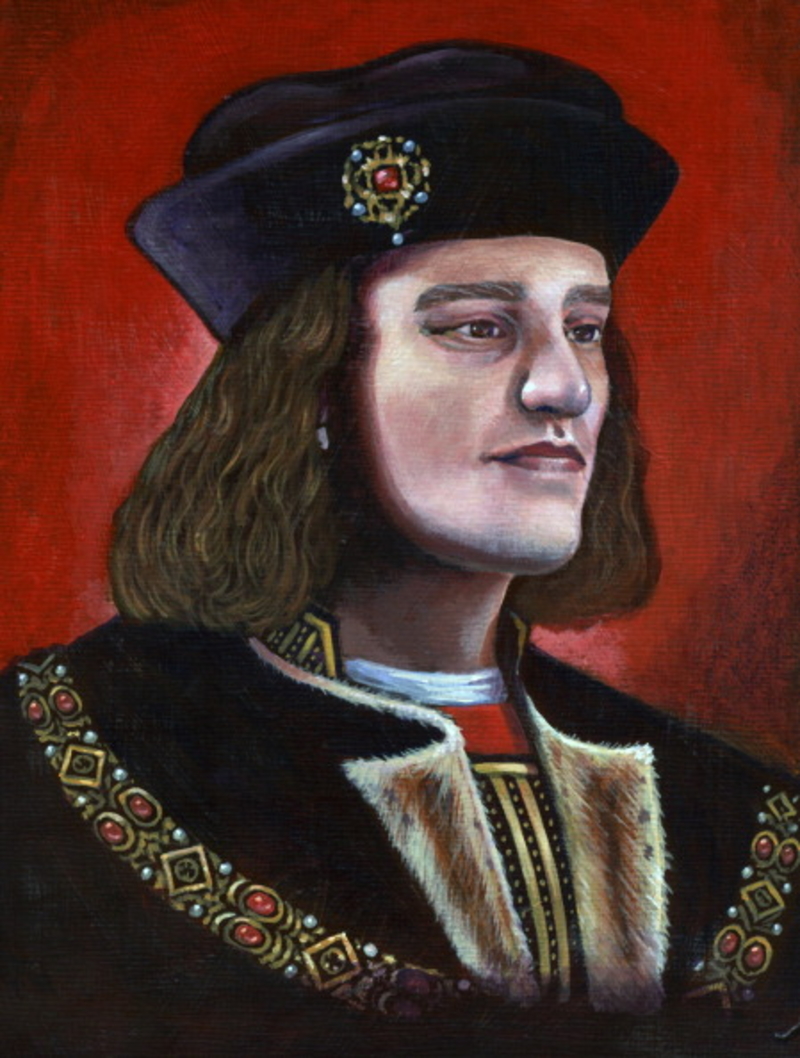
For a man who lived back in the 1450s, it would’ve seemed pretty impossible to even imagine trying to craft an image of Richard III. Why’s that? Well, shortly after his death, his burial site was seemingly lost to history. But researchers believed they could find him – following clues which led them to an underground parking lot, imagine their shock when they found his remains underneath! His body was exhumed and the carpark well, it was probably torn apart! Ah, the things we do for history!
Richard III: The Man Himself
Following the discovery beneath the Leicester carpark in 2012, it led to a massive increase in curiosity about the former King of England. At the Battle of Bosworth Field, Richard III’s place of death, the King rather stupidly led a charge right into the thick of the Tudor’s army. What ensued was a fight that looked more like “The Red Wedding” on Game of Thrones than a fair and proper battle. Riding right into battle, Shakespeare, the cheeky wordsmith he was, threaded a line into his play Richard III “ “A horse! A horse! My kingdom for a horse!” Checkmate.
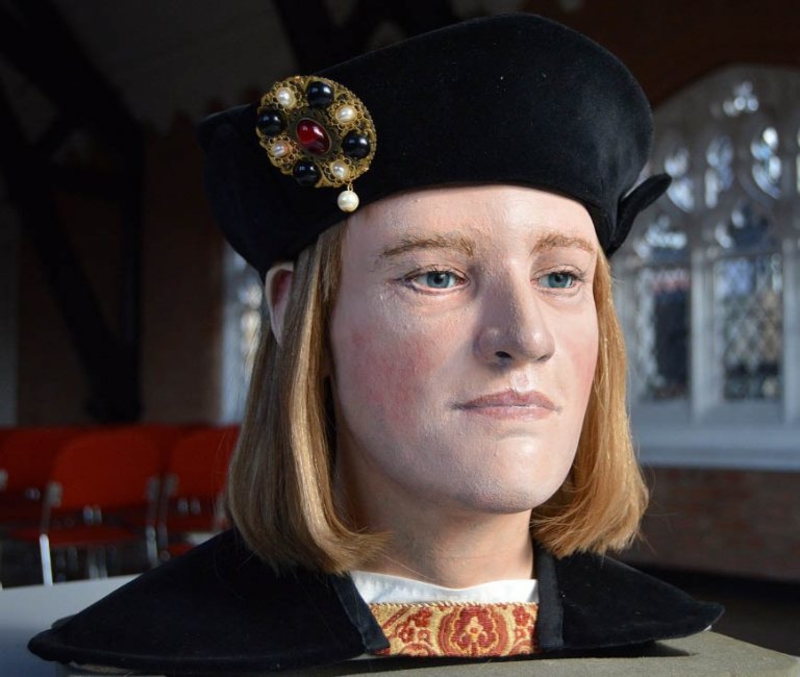
Dundee University seems to have quite the curious and dedicated team, not to mention the reputation as being the “facial reconstructionists”, because they helped to bring King Richard III into the modern world! Researchers were not guided by the usual host of paintings and drawings this time around, relying on the historical record and posthumously created paintings. The missing piece, however, was the skull of the king – and who would’ve thought it would be hiding under a parking lot!
Jesus Christ – Superstar?
The man you’ve all been waiting for. Yep, that’s right – researchers recreated the face of none other than one of the most famous men known to well, man, Jesus Christ. It’s estimated that Jesus Christ was born around 4 B.C. and died quite young, around 30 – 33 A.D. For those curious people, A.D., in fact, stands for “Anno Domini” or “The Year of Our Lord.” Now that’s a good fact to have up your sleeve for the next trivia night! The “Son of God”, “King of the Jews”, this man was (and still is) kind of a big deal. Most commonly depicted in Western Art (as well as Eastern Orthodox Iconostases),
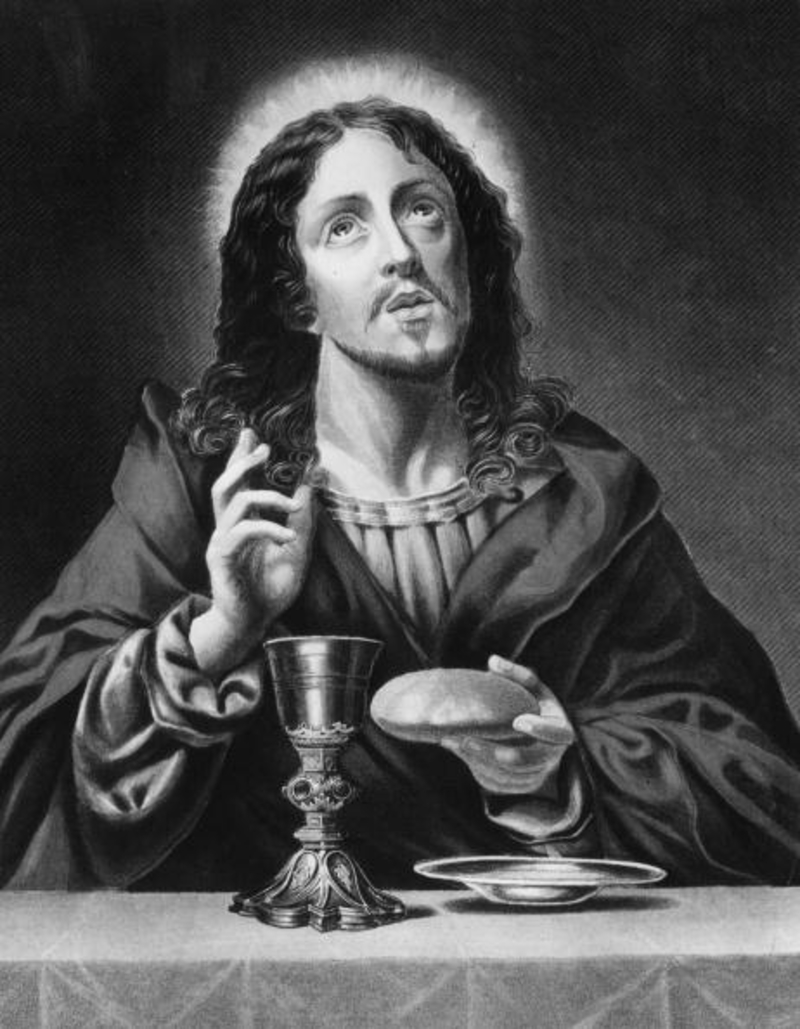
Jesus Christ is perhaps the most drawn or sketched figure in history. The images you see of the face below are among the most common found in the world. Basically, he’s very well known. Most people would know to describe Jesus Christ as “the young guy with long hair, brown eyes, wearing crocs and robes.” Okay, maybe no crocs. But this man popularised THE SANDAL. We are all about that comfort life. Interestingly though, the painting above which was discovered during the Middle Ages, reveals a white man with fair hair. Unlikely that the Easterners would’ve created this image! So what Jesus looked like might surprise some people. And sure, it is one of the most controversial topics in the facial reconstruction territory!
The Shroud of Turin: A Reliable Source?
For years, the mystery of the Shroud of Turin has conjured up a lot of interest and intrigue. Believed to be the burial cloth of Jesus of Nazareth, it is currently safeguarded within the Cathedral of Saint John the Baptist in Turin, Italy. Discovered in 1354, the 14-foot linen cloth had the image of the Crucifixion with a body depicted on the fabric. It seems that the Shroud verified the Scripture, with blood on the Shroud where his wounds were told to have been. The below image was produced using the Scripture passages, as well as skulls from the surrounds at the time of Jesus. Pretty eerie stuff eh?
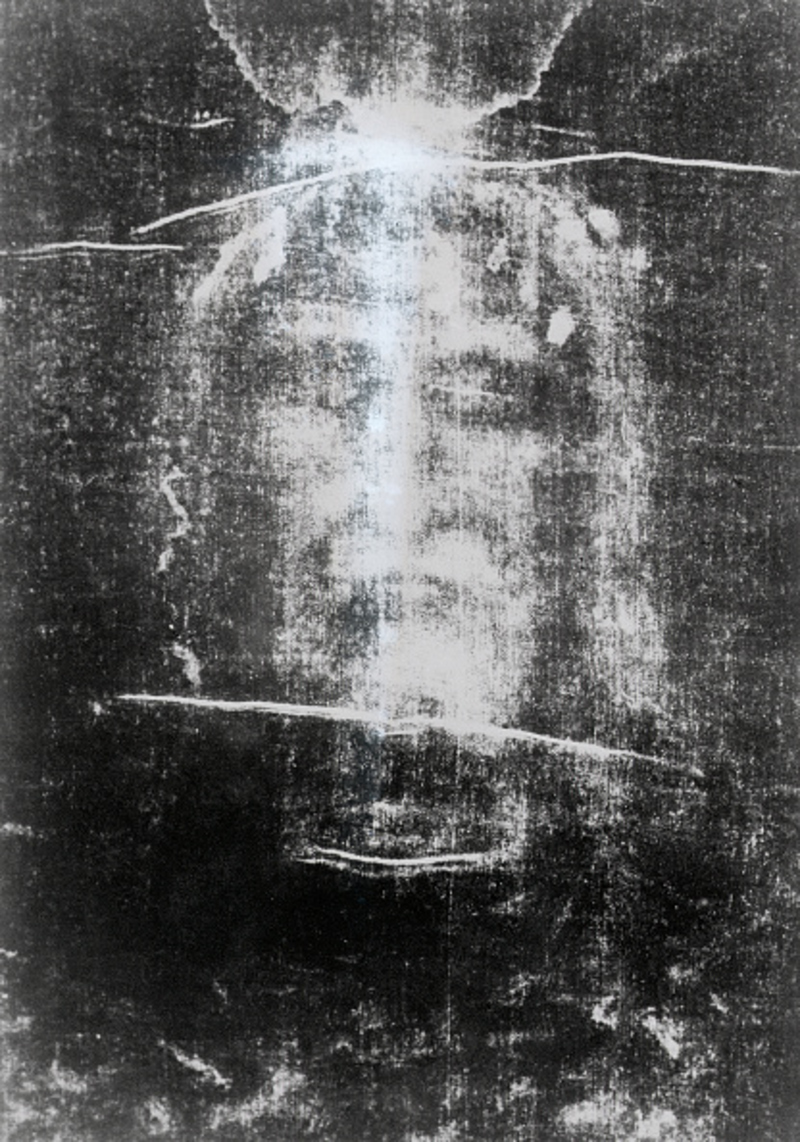
Now, this is the part that is so hotly debated. How can anyone prove that the Shroud did indeed belong to Jesus Christ? Was the image above just an artist’s impression based on images he’d grown up with? It is a difficult one to adjudicate, even for the most well-read and well-researched historians! In 2001, the above image, created by forensic anthropologist Richard Neave, was thought to help to settle the debate. According to the history books, as well as artifacts from the era, Neave was trying to demonstrate what a man of Jesus Christ’s age, time, and place would’ve looked like, back in the day
Meritamen, Beloved of Amun
The daughter and later Great Royal Wife of Pharaoh Ramesses the Great, (yeah ew), next up on our list is Meritamen. When her mother, Ramesses’ favorite wife, Nefertari died, Meritamen took her place. Weird eh? But hey, the ancient Egyptians liked to keep things er… in the family. Even if it led to the deformities found in Tutankhamun.
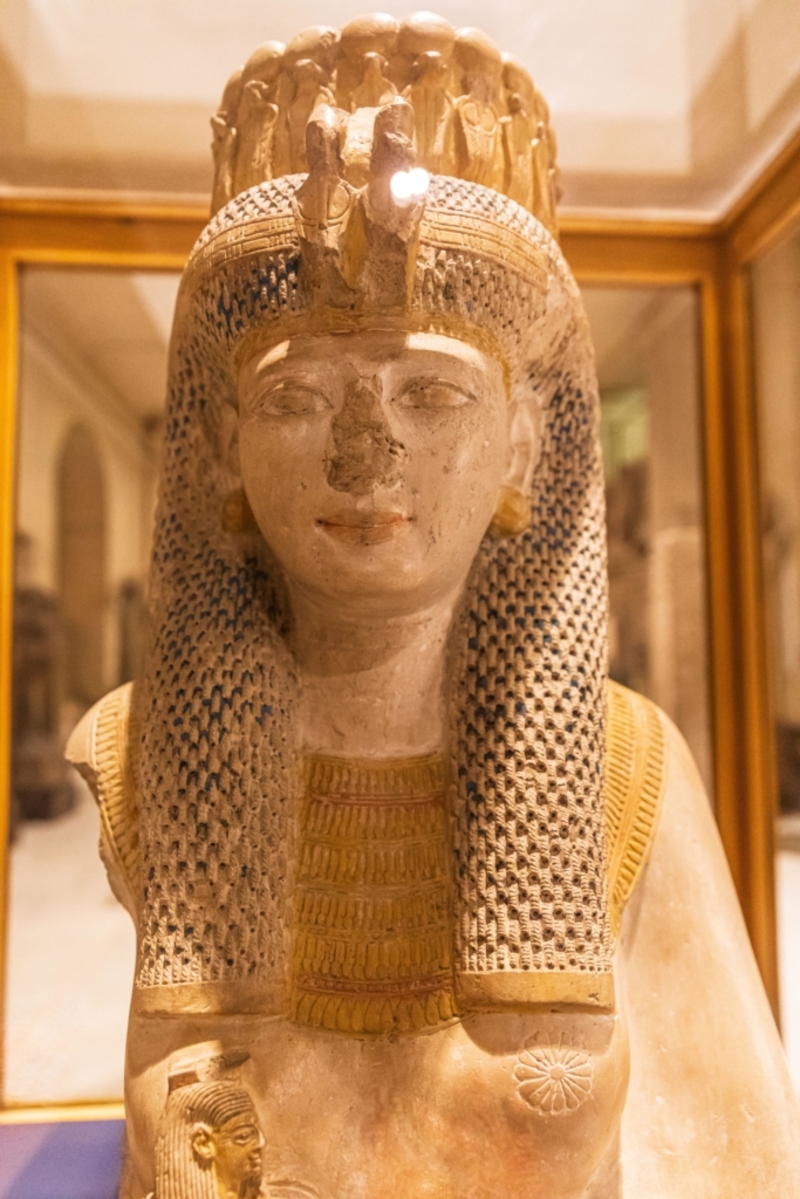
Fast forward, and the skull of the “beloved of the god Amun” was discovered in the archives in a peculiar place: none other than at the University of Melbourne! Now that would’ve made some university researcher’s day! Or year! No one seems to know how her skull managed to get on a flight to Australia. The mysterious Meritamen was a noblewoman, and it was determined that the skull was over 3,000 years old. At the time of her death, it seems she was relatively young – researchers estimate she was between 18 and 25 at the time.
Putting Meritamen Back Together
It’s funny the things you find out when you examine a skull – not that we’d have any experience. It seems that the young queen had a case of tooth decay! This then matched up with the researcher’s guesses that she was born during the time of Alexander the Great, as he was the one to bring sugar to Egypt during his series of conquests.

140 hours and more were required from researchers who conducted the CT scans. Using a 3-D printer, the above figure of Meritamen was constructed. According to researchers, and by analyzing her bone structure, Meritamen was quite the looker! It was also discovered that she suffered from anemia, which was potentially related to her death, as it would’ve caused her to be weak and lethargic. Poor thing, can’t imagine it was fun with her living situation.
Saint Anthony
Saint Anthony of Padua, known as Saint Anthony of Lisbon, was a Portuguese Catholic priest, and friar of the Franciscan Order of monks. Raised by a wealthy family in Lisbon, Portugal, he turned to a simpler life which was devoted to the service of the Lord! His contemporaries noted his powerful preaching, expert knowledge of the scriptures, as well as his undying devotion to the poor and sick. It’s no wonder that Saint Anthony was one of the most quickly canonized by the church in its history! But he wasn’t only known for his oratory skills or ability to heal the sick – he’s also the patron saint for lost things. So next time you lose your phone charger…just sayin’.

Much beloved by the Catholic Church, his legacy carried on to this day, despite him passing away at the young age of thirty-six! For a man who’s purportedly the saint for lost things, wouldn’t you want to have a face to imagine so you know who to direct your prayers to?
Behold… The Face Of A Saint!
Tales surrounding Anthony of Padua’s death are quite peculiar, and perhaps a little larger than life. He died in 1231, and it’s rumored that bells rang of their own accord, and children began crying spontaneously in the street. If that’s true, well, cool story bro, but if it isn’t, we’re not too shocked about that either! In a creepy twist, his body was exhumed three decades later. The exhumers found that all that was remaining of the saint was his bottom jawbone and tongue. If you’re already feeling a little queasy, you probably don’t want to know that you can visit them because they’re on display!
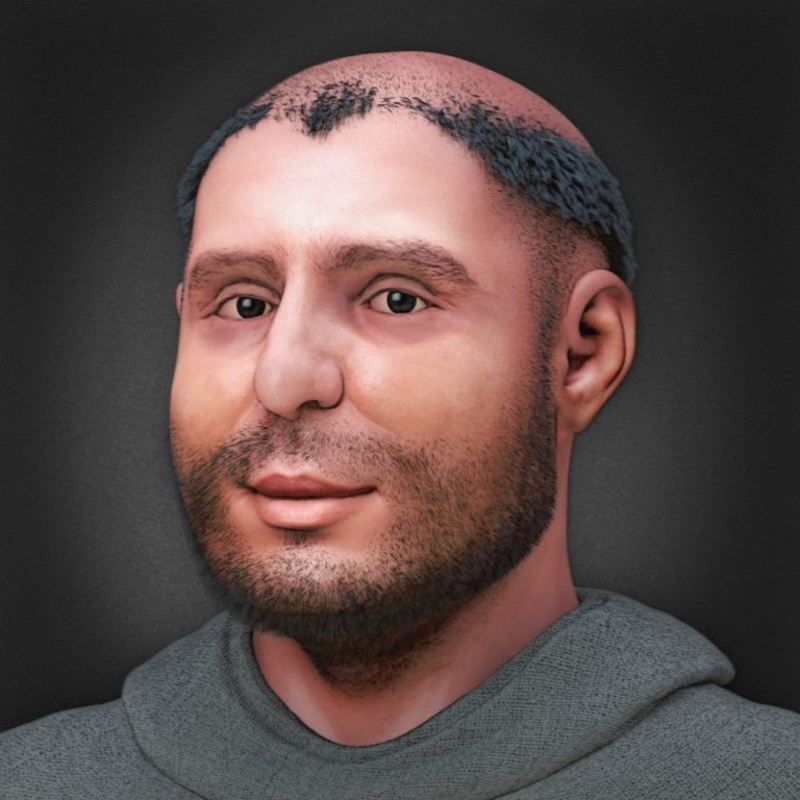
Fast forward from the 1260s to 2013, where researchers and theologians teamed up with a 3D designer at The University of St. Anthony of Padua’s Anthropology Museum. Their mission? To find the missing face of the patron of lost things. Sometimes it’s best to let the dead rest and to not bring their faces into the future. But this team clearly thought it was a good idea. It seems that even with this recreation of his face, the church still holds him in high regard. Jawbone and tongue and all.
El Señor de Sipán
For you non-linguists out there, here’s the English version: The Lord of Sipán! Now the story behind this name is quite mysterious! Given to the first of several Moche mummies discovered at Huaca Rajada in Peru, it was a name decided upon by its discoverer- Walter Alva. A fairly recent discovery, the mummies were found in 1987! Archaeologists deem this site one of the most significant in the twentieth century, particularly because the Lord of Sipán’s tomb was found intact and left untouched by thieves! After careful excavation, fourteen tombs had been located and identified in the area. In many ways, this discovery is very similar to that of the tomb of King Tutankhamun.
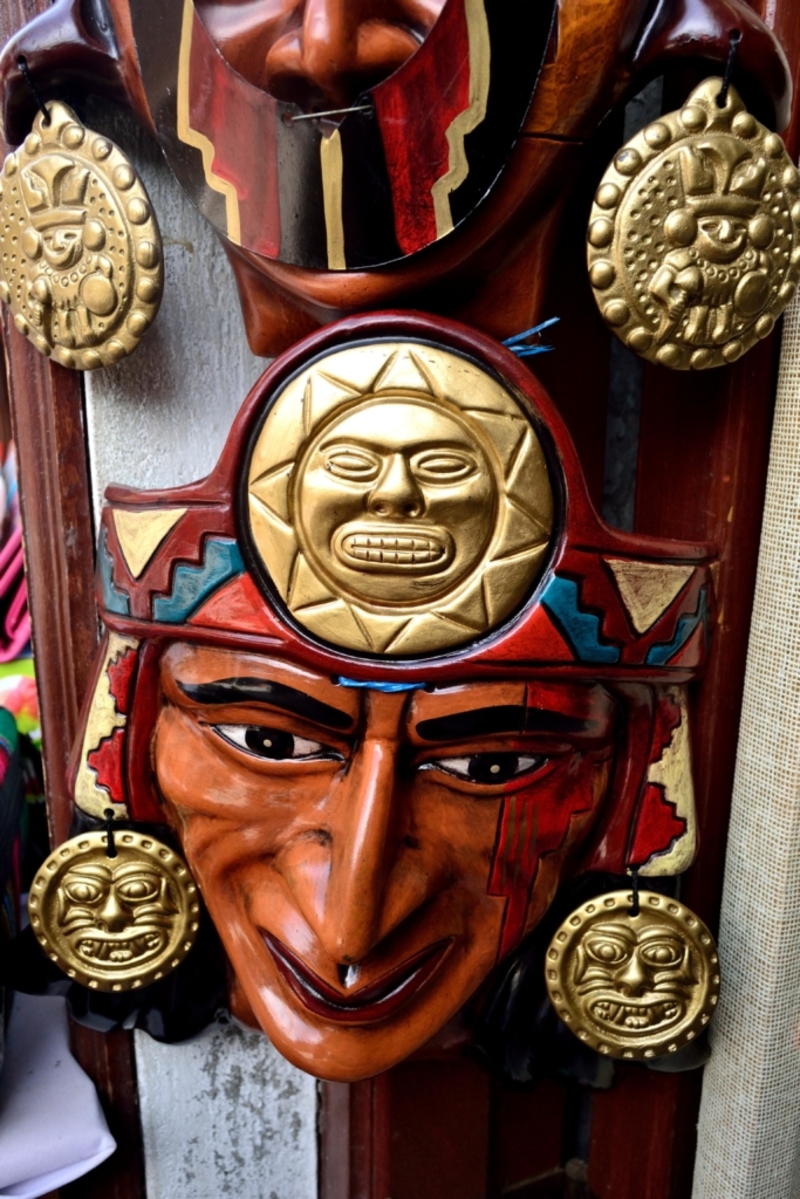
It seems that the ancient Peruvians also believed in the afterlife and burial procedures – as such, Sipán who was found buried with a treasure trove! Now this was a delicate procedure for the forensic team – sometimes it’s best to not disturb the dead – as the pressure from the sediment that had been lying dormant for over 2,000 years dropped, and consequently shattered the skull into 96 (yes, 96!) pieces! Thankfully modern technology allowed them to re-pierce it all back together. Talk about time-consuming work!
The Lord of Sipán: Put Back Together
So as to the long process of piecing his skull back together, researchers used a process called photogrammetry to aid them in their task. The way it works is that cameras are set up at all angles to create a three-dimensional image. From this created image, the Brazilian Team of Forensic Anthropology and Forensic Odontology was able to produce the image you see below. Researchers believe the man was 35-45 years of age when he died, and was not just a common man. It makes sense with all the treasure he was buried with! But it wasn’t just the treasure – this man was wearing incredibly ornate jewelry, imbued with precious stones and set in rare metal.
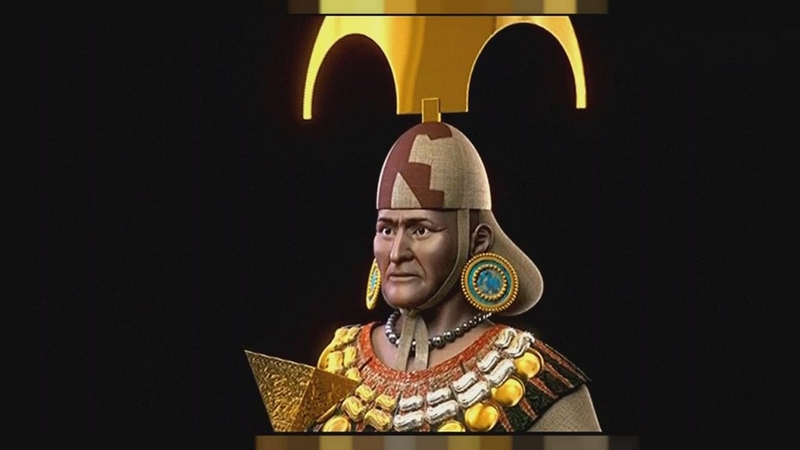
He was also buried with two warriors. Bodyguards for the afterlife? The creepier part is the fact that their feet were amputated… please let’s hope they weren’t buried alive with their feet cut off so they couldn’t leave!! Gruesome stuff.
King Henry IV
With a nickname like “Good King Henry” or even “Henry the Great”, you’d be expecting someone rather extraordinary. But Henry IV of France’s tale is more one involving a baptism by fire, rather than rise to power and greatness. At the tender age of 19, Henry became the King of Navarre, before being swiftly married just two months later! So he not only inherited a kingdom, but he also managed to get himself hitched! What a wild ride that would’ve been for him! At the time, there was a religious war between the Catholics and the Protestants. Henry IV was the only French king to ever follow the Protestant faith! But the fighting was absurd – for the event of Henry IV’s wedding, thousands of Protestants came to Paris to enjoy the celebrations and spectacle, but this was to end catastrophically.

What is remembered as the St. Bartholomew’s Day Massacre, took place on the very day of his wedding, with the same Protestants being killed by Catholic fanatics. Henry barely escaped with his life, and was forced to serve in the French court. After five years he escaped, and raised an army to fight in the “Wars of Religion.” In 1589, he marched right into Paris. His counterpart Henry III was assassinated, and he became the King of France. Talk about an eventful start – he was 36 years old at the time!
The Good King Henry
After waging his religious war, he followed through with his promises to the Protestant French, persecuting Catholic French people across the nation. Whilst a seemingly noble effort, he was made a popular target for assassination attempts, allegedly dodging twelve attempts on his life! Looks like the party didn’t stop for King Henry IV! “Le Bon Roi Henri” was remembered for his concern for the welfare of his people, and for being a King who worked to protect the interests of the state, promoting agriculture, eliminating corruption and encouraging education. A forward-thinking man in a time of backwardness!

Due to his tolerance, he was an unpopular king among his contemporaries, though did gain more status after his death. For this reason, researchers chose to recreate his face using modern technology. The same team which worked on bringing Robespierre back to life, including forensic pathologist Philippe Charlier and facial reconstruction specialist Philippe Froesch (must be a thing with the French and “Philippe” eh?), also worked on showing the modern world the face of the “Good King.” Sadly, he did not survive his thirteenth assassination attempt, but we do get a very good idea just exactly how this noble French king looked back in the day!
Maximilien de Robespierre: The Accomplished
Despite a short reign as head of state of France during the late 1700s, Maximilien de Robespierre is one of the best known and most influential figures, due to his association with the French Revolution. An accomplished lawyer and politician, he was an outspoken advocate for those “quite French people” and importantly, for the right to petition. He campaigned for the abolition of both celibacy AND slavery in the French colonies. Sounds like an upstanding citizen eh? And no doubt highly unpopular with the rulers of the time. His role in what was called “The Reign of Terror” has ensured he’s left an indelible mark on history.
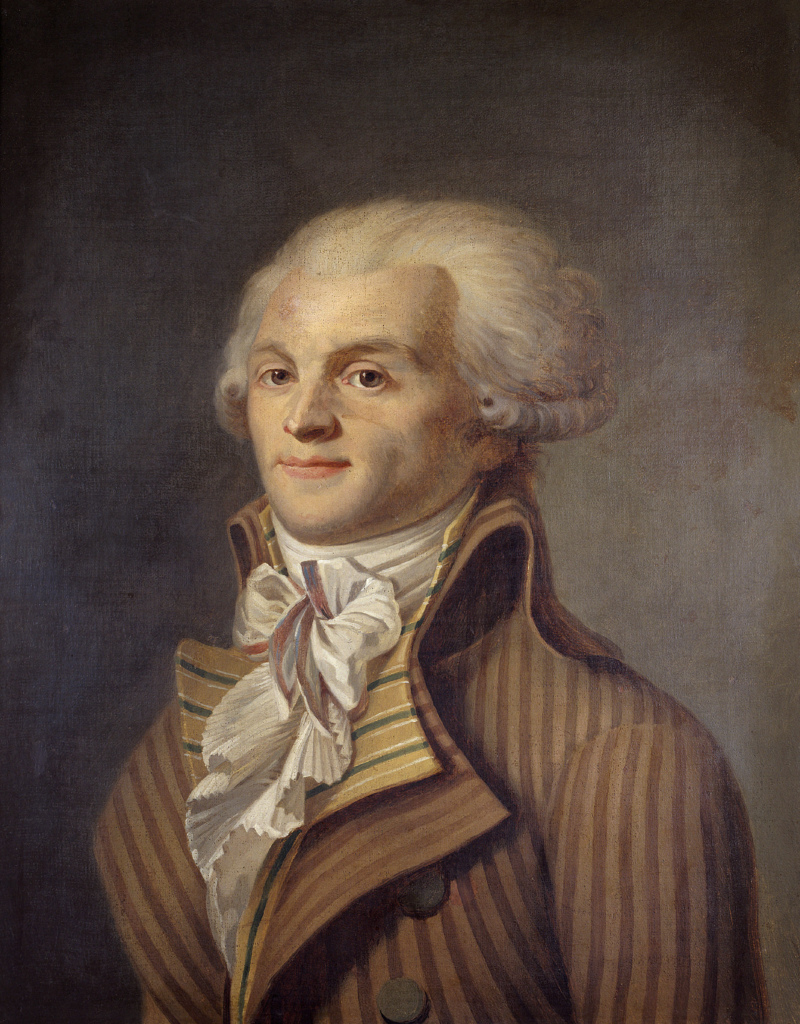
He helped establish the feared Committee for Public Safety after King Louis XVI and his cake-enthusiast wife Queen Marie Antoinette was executed by the famous guillotine! A brutal regime, Robespierre was behind who was, and who wasn’t executed – by the same method as the former King and Queen – yeah, the guillotine. It was also a time of great religious persecution – he tried to make the French national religion “The Cult of the Supreme Being.” Basically, a madman with a white wig.
Just The Tip of The Robespierre?
Clearly, the myth behind the man was so great that it intrigued forensic pathologist Philippe Charlier, and led him to join forces with facial reconstruction specialist Philippe Froesch to re-create the face of the mad French statesman. The pair used his actual death mask to help to construct the image that we see today. Now Robespierre’s actual responsibility for what occurred in France during that pivotal time is a hotly debated topic among historians.

Some believe he was the “incarnation of Terror” whereas others see him as more of an ideologist, who brought democracy to France. Either way, the man had a lot of opinions! Following the massive amount of executions held during the French Revolution, even Robespierre came under scrutiny. He found out what it was like to experience the guillotine, even if he didn’t remember anything afterward!
Bach As Seen In The Future!
Okay, we know you loved our Back to the Future pun, but we should probably get back to the business side of things. Composer and musical savant, Johann Sebastian Bach is one of those magical music men whose legacy continues to this day, and will continue for many years to come! Born in Germany in 1685, he was raised in a family with a musical pedigree. A wonderful musician, Bach has always been remembered as one of history’s great composers. A result of the “Golden Age” of music, he is nestled well within the Baroque period.
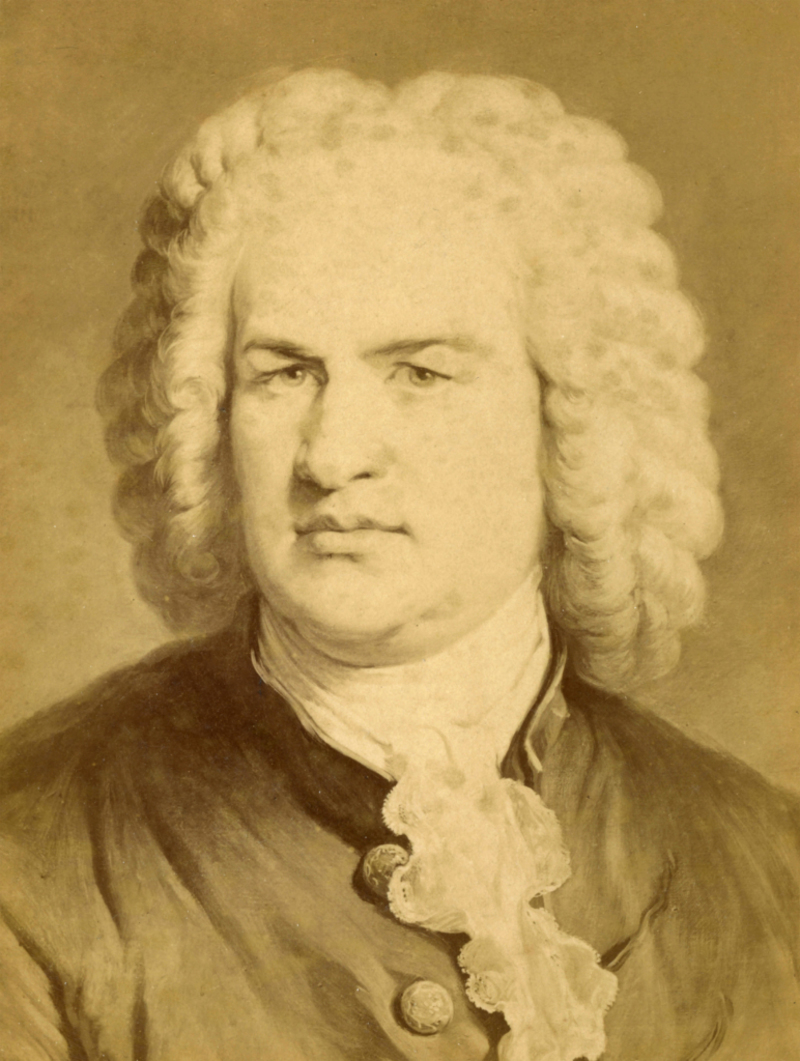
Known for his compositions Art of Fugue, the Brandenburg Concertos, and thee Goldberg Variations among other pieces, in the classical world, he is a treasured composer. But haven’t you wondered what this fabulously talented man may have looked like? Well, so did a bunch of music historians! Prodigious with the organ and nearly any musical instrument he touched, Bach began writing music for the church. In 1721 he completed writing his renowned Brandenburg Concertos, music that defined the period. It is often reflected that what Bach achieved was a feat to marvel at.
A Face of Music
Now Bach, sadly, was buried in an unmarked grave when he passed away, which meant his remains were almost nearly lost to the annals of history. Dr. Caroline Wilkinson of Dundee University (the woman who is famously responsible for “resurrecting” playwright Shakespeare), made it her mission to also bring Bach back…to the future. Using a cast of what is believed to be Bach’s skull, researchers and historians went to work. 150 years after his burial, the church where Bach was supposedly buried, was desperately in need of repair.

Theologians and music historians quickly thought to try and find Bach amidst the renovations and exhumed a number of graves. One of which, they believed to contain the body of the famed composer. The remains found in the grave, which included a skull, were loaned to Dr. Wilkinson to recreate the face as you see it in the above image! Now that’s slightly creepy but, there is a certain… harmony in it all! He may not have an angel face, but he sure produced some heavenly music!
Not Just Some Bones
Given the nickname ‘Ava’, the young woman was supposedly between 18 and 22 years old at the time of their death. Her skeletal remains are said to be from around 3,700 years ago. According to lead researcher, Ms Hoole, it was especially exciting when they discovered the possibility of her being part of a wave of northern European migrants are believed to have settled in that area.

Hoole went on to comment, saying that “since her discovery, there have been no, or very few, genetic connections with the local Neolithic population who resided in Caithness before her”.
The ‘Griffin Warrior’
Labeled by the Greek Ministry of Culture as one of the most important tombs ever discovered in Greece, this three and a half thousand-year-old grave was fund in Pylos in October 2015.
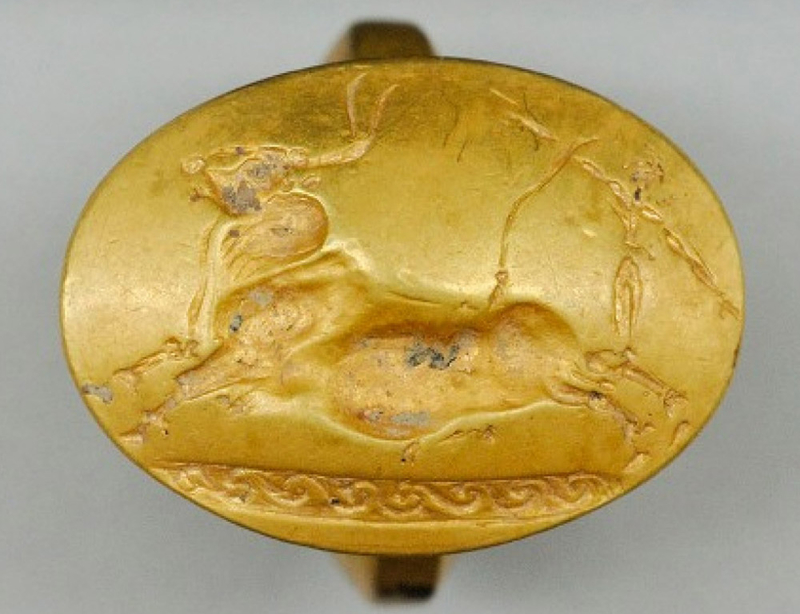
Researchers from Witwatersrand University in Johannesburg South Africa discovered the tomb that was filled with over 1,400 sacred artifacts.
A Face of a Warrior
The team of Witwatersrand researchers embarked on a massive project in an effort to restore the face of what they concluded was the owner of this tomb. According to their research, this find belonged to a male warrior. The unearthing of the ancient seal that lay inside the tomb gave a strong indication of what he could have looked like.
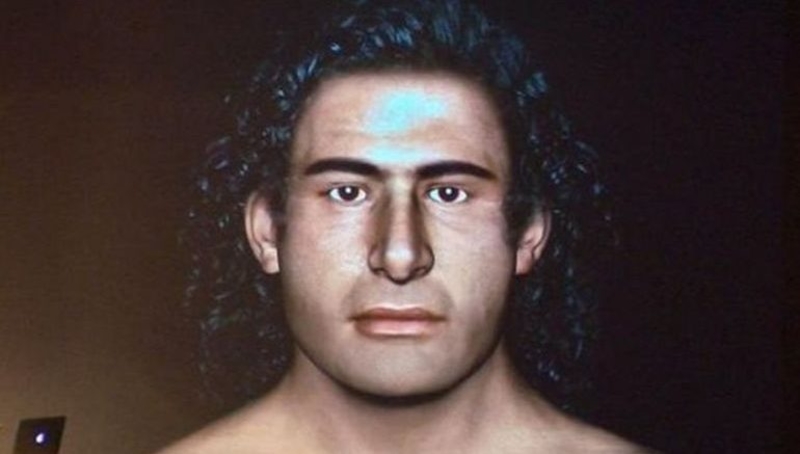
Given that it was discovered in continental Greece, the artists and archaeologists concluded that the warrior’s face had a distinct middle eastern look. Using their reconstruction technology and DNA traces, the team put together the face of a dark and curly-haired strong face with a protruding brow. While they could be, perhaps, a little vague, this face is a good depiction of what many people looked like in that region at the time.
Saint Nicholas
Also known as Nicholas of Bari, this old Christian bishop was a real giver. It’s no secret that Coca-Cola based an entire campaign on him that would later become the symbol of Christmas. Yes, Santa Claus was modeled on Saint Nicholas, and truth be told, the red and white burly ‘Father Christmas’ doesn’t look that different from the original guy. He was also famous for giving gifts to the people and during his lifetime, it is said that a series of miracles and wonderment occurred.

There are many paintings of St, Nicholas. In many of them, he dons the iconic red and white robe, and of course, he has a big white beard. To get down to the real face of St. Nicholas, did, however, take some work. This took a team of artists as well as the original skull! That’s right, back in 2004 researchers already had a series of X-ray photographs and measurements that were originally compiled in 1950.
A Shade Darker
3D artists from Liverpool John Moore’s University helped reconstruct the supposed of face St. Nicholas. Based on the extensive research, the bishop was seemingly much darker than depicted in paintings.
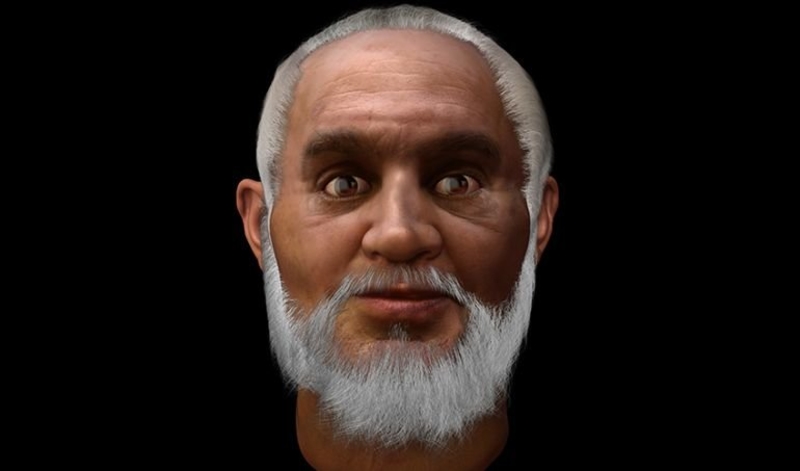
Thought to have olive skin and a broken nose, the “real Santa Claus” seriously resembles many of the depictions seen in medieval Eastern Orthodox murals.
Lady of Cao
Lady of Cao is the name of a woman who came from the Moche civilization that resided in Northern Peru. The Moche people are believed to have lived from about 100 to 700 AD during the Regional Development Epoch (Pre-Columbian Peru). The mummy was discovered at the El Brujo archaeological site which is over 40 km north of Trujillo.
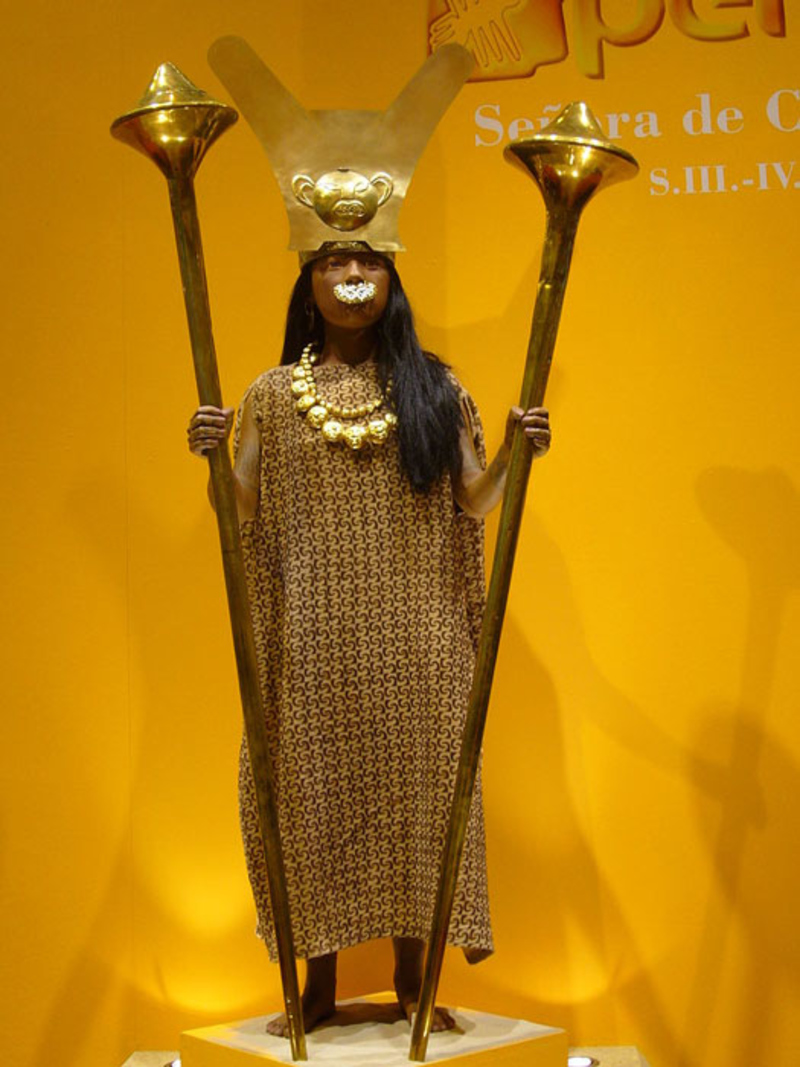
The discovery team of Peruvian archaeologists was led by Regulo Franco Jordan of the National Cultural Institute of Peru. The mummy was found to be covered in tattoos and wrapped in several layers of cloth. Buried alongside her were a number of ceremonial objects, jewelry, and weapons. She was discovered in 2006.
Cao Re-imagined
On July 3, 2017, Peru’s Ministry of Culture, culture officials and archaeologists presented a replica of what would be the original face of the Lady of Cao. Experts used a combination of 3D imaging technology and forensic technology. Referencing her skull structure the process took roughly 10 months to create.
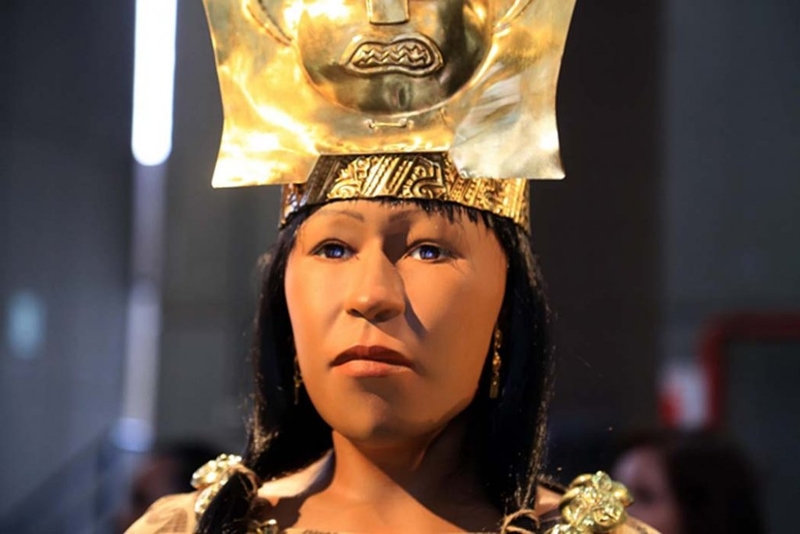
Now that we can look into the face of Lady Cao, it’s a wonder to imagine her life. While we experts don’t know a whole lot, a modern autopsy indicated that she died in her mid-twenties. Her death was most likely linked to complications during pregnancy or childbirth. The estimated date of death for the Lady of Cao is about 450 CE.
Nicolaus Copernicus
Nicolaus Copernicus- the man who single-handedly put an end to global narcissism. That’s right, this was the guy who figured out that the earth rotates around the sun, and not the other way around. Copernicus was a mathematician during the Renaissance period and was also the first astronomer who succeeded in creating a detailed model of the way the planet rotates.
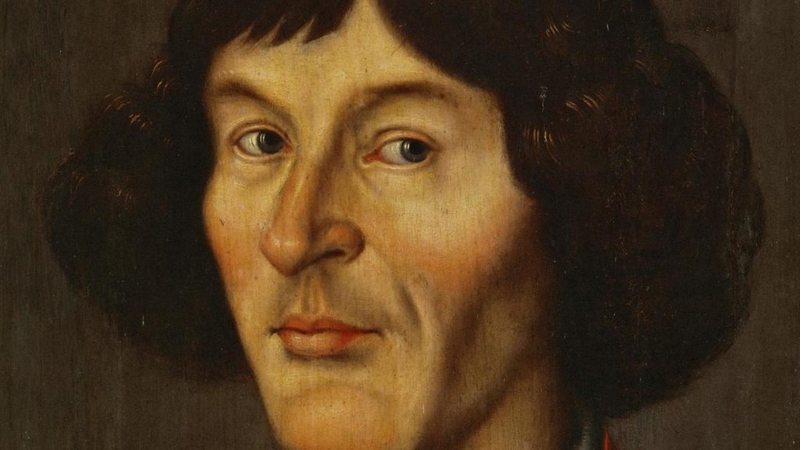
Copernicus had quite an interesting life story. He was born in Royal Prussia, a region that today is a part of Poland. He got his doctorate in canon law and immersed himself in a number of fields, among them; astronomy, economics, politics and mathematics. He also formulated a well-known economic principle that later became known as Gresham’s law.
Unearthing Copernicus
A team of forensic scientists has found what they believe to be Nicolaus himself. The group that unearthed the skeleton in Warsaw sent it to a lab for further analysis. Based on some extremely distinctive features that both the remains and Copernicus shared, experts believe that this could have been him. Warsaw scientists revealed that both Copernicus and his supposed corpse have a scar above the brow. Not to mention that he was also found in the area of Warsaw he is believed to have lived and died in. These features match those seen in portraits of Copernicus from the 1500s.
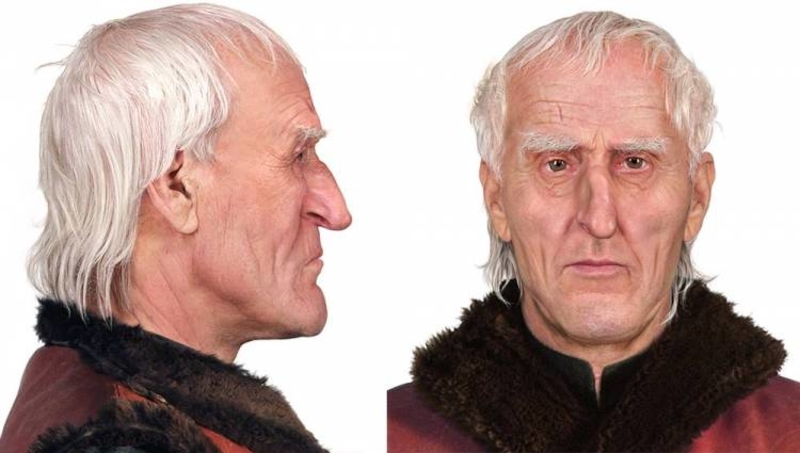
To confirm their theory, archaeologists have mounted a search for the grave of Copernicus’ maternal uncle, Lukas Watzenrode. Genetic comparison of the bones will reveal whether they belonged to uncle and nephew.
Simón Bolívar
Simón Bolívar was a political leader who liberated Venezuela, Bolivia, Colombia, Ecuador, Peru, and Panama from the Spanish Empire. Bolívar was lauded for also laying the foundations for democracy for all of Latin America. He was hailed ‘El Libertador’ – the Liberator. After a string of successful military campaigns, Bolívar became the president of Gran Colombia in 1821, (a state covering several Latin American countries, recently liberated from the Spanish).
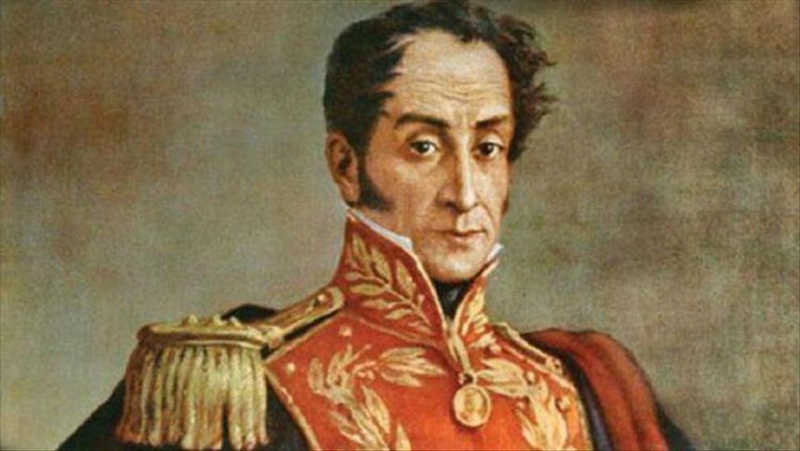
On December 17, in the year 1830, Simón Bolívar died of tuberculosis. He was only 47 years old. His remains were transferred from Santa Marta to Caracas and then subsequently buried in the cathedral of Santa Marta. In 1876, he was moved to a monument set up for his interment at the National Pantheon of Venezuela.
Long Live the Liberator
Looking at a re-imagined CGI image of Simón Bolívar, you would think it’s a real live person. Alas, it is not. The CGI reconstruction is a result of over a year’s research and digital sculpture that was done by a forensic imagery team. The team, with minimal help from the Venezuelan government, sifted through thousands of images and historical documents to bring Simón Bolívar to life.

If these results are a true depiction of the real Bolívar, then it’s reasonable to say that he was rather easy on the eyes. This image, aside from being far more realistic, is much more aesthetically pleasing than previously painted depictions that always seemed a little cartoonish. The reconstruction was unveiled on the 229th anniversary of the political legend’s birth and currently sits in central Caracas
Giovanni Battista Sidotti
Giovanni Battista Sidotti was an Italian missionary and secular priest. This man was unquestionably dedicated to the word of God as he traveled all the way to Japan just to spread those messages. Not so insane? Well, not only did he do this in the 1700s, but he also did this where time outsiders, especially missionaries, were heavily punished for proselytizing. Sidotti didn’t seem too concerned however and decided to jump on a boat disguised as a samurai and make his way into Japan. Obviously, he was immediately captured as he stood out for being a westerner. Whoops.
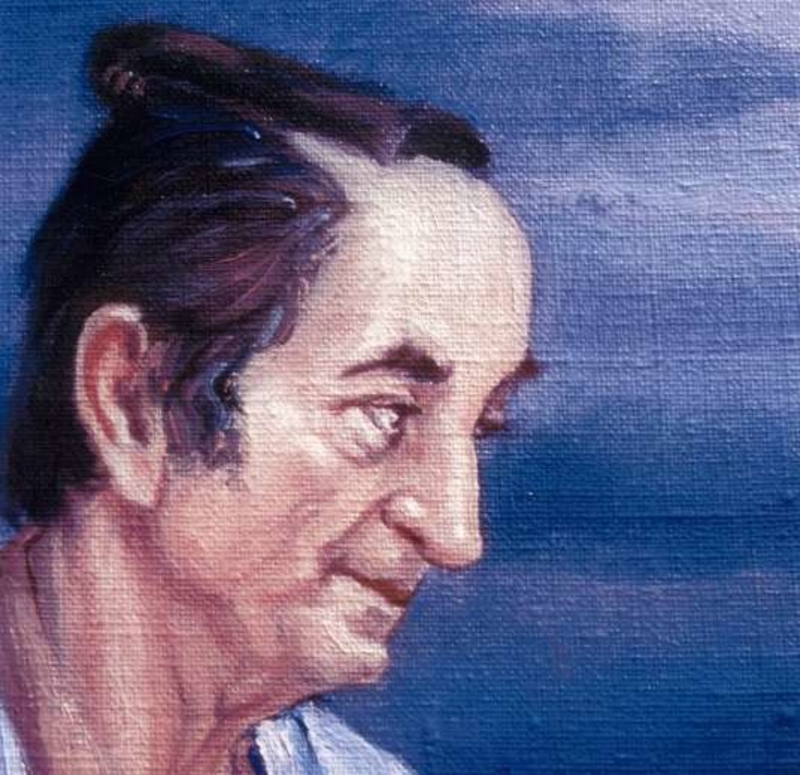
Sidotti was put under house arrest and was forbidden to practice his preaching to anyone. His guards were an old couple who had oddly turned their backs on Christianity. After attempting to convert the couple, Sidotti was moved to an underground cell where he eventually died at age 46. His remains were excavated in 2014 with the 2 million yen grant from Tokyo’s National Museum of Nature and Science.
Japan Gives Sidotti a Second Chance
Sidotti’s remains were discovered in 2014 during the excavations of the former Kirishitan Yashiki (Christian compound). Compared to other historical figures, such as Egyptian mummies, forensic experts were actually pleased to find how easy it was to reconstruct the face of this legendary missionary. While the skull was exhumed in a state that was actually not so great, 3D artists still succeeded in making Sidotti come ‘to life’ so to speak.
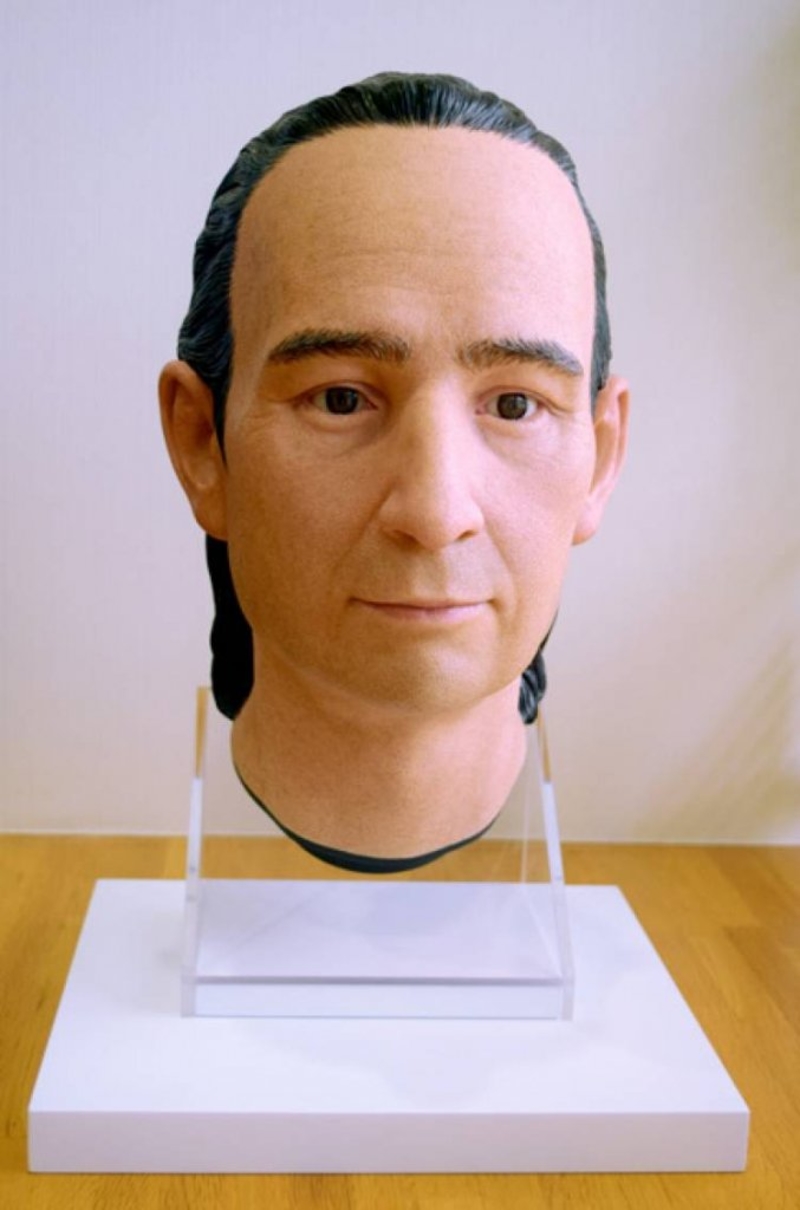
It looks like this two million Yen project was certainly worth it. While Sidotti was ultimately imprisoned and died in captivity, his captor still had great respect for him and his level of knowledge. He truly was one of the iconic figures that brought the east and the west together. You can tell by his face that he also had some kind eyes.
Dante Alighieri
Alighieri has been immortalized as one of the most iconic poets of the middle ages. Born in modern-day Italy, Dante wrote the Divine Comedy or Comedìa. While his work stood the test of time, unfortunately, he didn’t. After a scandalous period of accusations of corruption and exile, Dante died of what is believed to be malaria. He was buried in Ravenna at the Church of San Pier Maggiore (later called Basilica di San Francesco). Bernardo Bembo, praetor of Venice, erected a tomb for him in 1483.
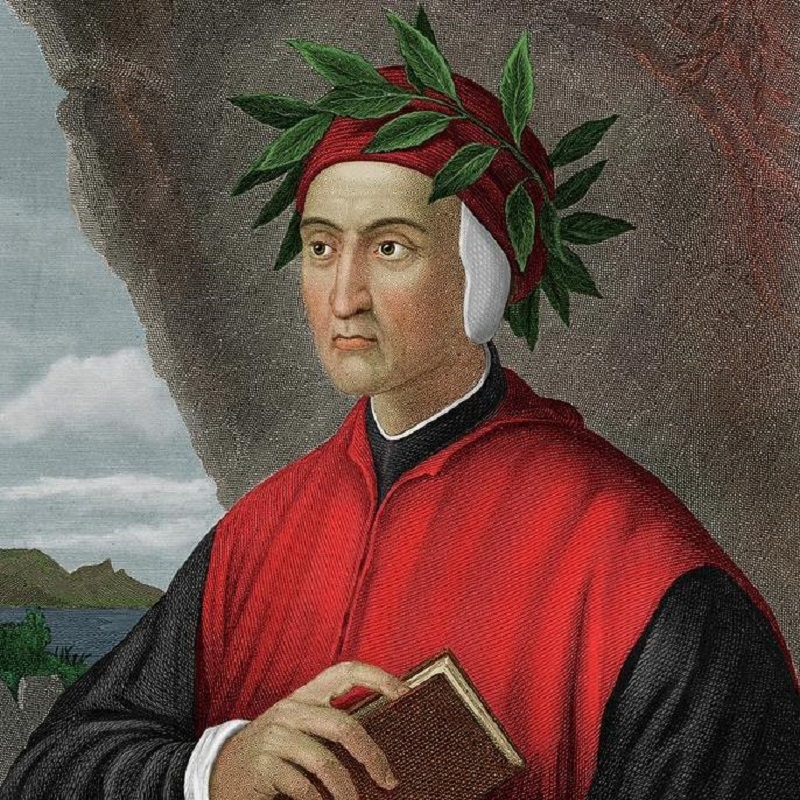
Dante lived to the age of 56 and died in the year 1321. His work has survived centuries and is until this day an inspiration for writers and artists. He certainly left quite the legacy
Not So Scary Looking
Dante Alighieri has been immortalized as a rather bony-faced and hawk-nosed intellectual. This is mostly due to Raphael’s portrait of him. The Italian Renaissance painter was not very forgiving when depicting the literary legend, and while this image of him has made it all the way to Italy’s two euro coin, it might not be entirely accurate. Researchers from the University of Bologna worked on re-piecing the poet and found it to be very different from earlier portraits that were done by Botticelli, Raphael, and Giotto.
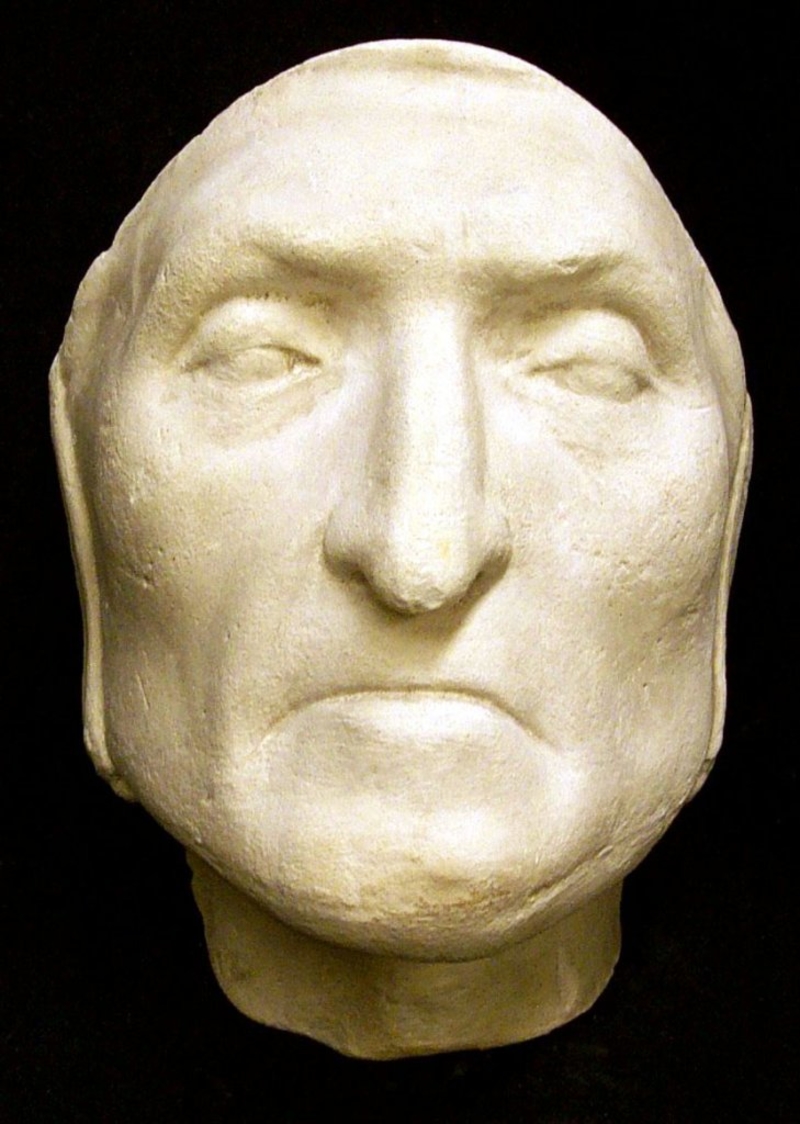
Professor Giorgio Gruppioni, the lead anthropologist of the team was very happy with the restoration, saying that “We have restored Dante’s humanity. He has become one of us again. The portraits wanted to show something of the spirit of the poetry in his features. They were more sentimental than real.” The reconstruction took him and two colleagues around a year to complete, he added.
Robert Burns
The national poet of Scotland, Robert Burns, was born in 1759. He was a famous poet and lyricist, nicknamed the Ploughman Poet and was actually chosen as the greatest Scot of all times by the Scottish public in a vote held in 2009 by a local television channel. His most famous song is Auld Lang Syne, which is traditionally sung in English-speaking countries at the end of the year. Burns pioneered the Romantic movement and wrote both in the Scots language and in English.
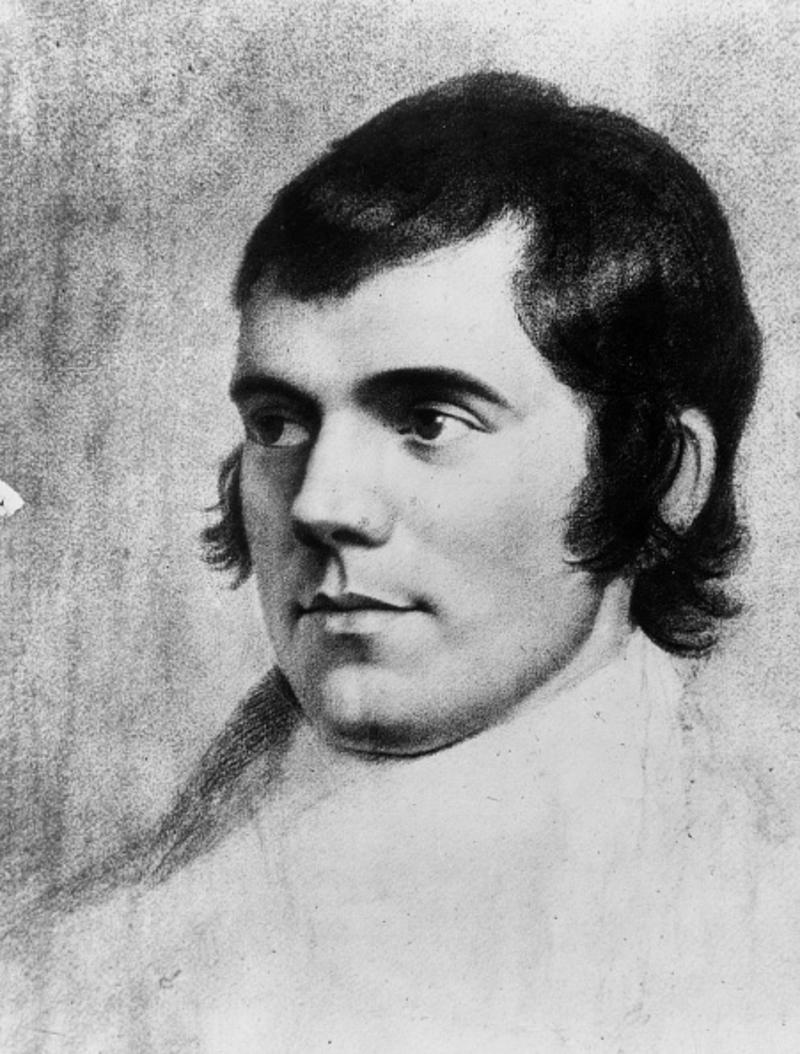
Burns has a very famous face. It is said that his face was depicted in more cities around the world than any other historical figure. He also appeared on stamps in Russia and the United Kingdom and has been featured on Scottish currency. Although the most famous portrayal of the poet was painted in 1787 by Alexander Nasmyth and resides in the Scottish National Portrait Gallery. The painting was commissioned by Burns’ publisher and was meant to be engraved on a new edition of his poems. In it, he likes quite young and dashing.
The Bard’s True Face
The project of reconstructing Robert Burns’ face began in 2010 in a collaborative effort by Scottish poet Robert Burns enthusiast Rab Wilson and Caroline Wilkinson, Professor of Craniofacial Identification. However, in 2016 the LJMU Face Lab got involved and used a partial cast of his skull, relevant documents, and historical portraits to create the 3D model.
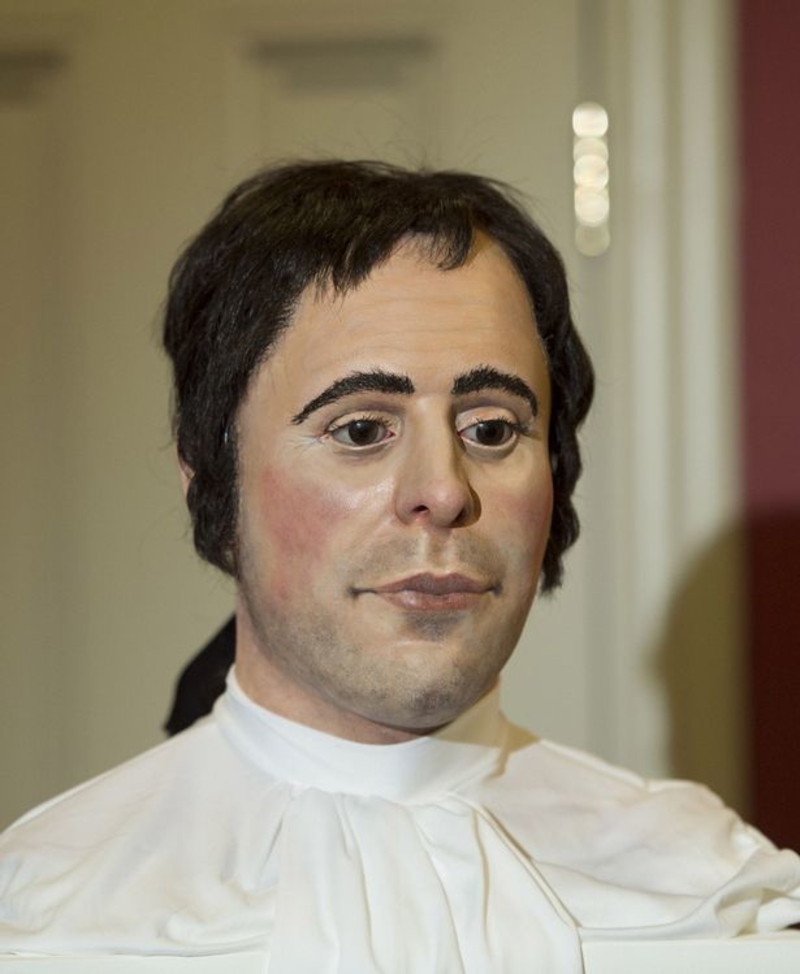
But just showing what he looked like wasn’t enough for this team. They wanted to have him actually recite one of his poems. They recorded fellow poet and Scotsman Rab Wilson reciting Burns’ poem, ‘To a Mouse’ and used DI4D’s Facial Motion Capture System at the 3D Visualization Unit in the University of Dundee. They then superimposed Wilson’s facial animation and voice to create the final animation. In the end, the poet looks similar to his portraits, but with a bigger head and eyes. Bigger than average according to the experts.
Jonathan Swift and His Muse
The legendary Anglo-Irish author Jonathan Swift was born in 1667. He was known for his satirical style and is most famous for his novel Gulliver’s Travels. Swift was also an essayist who wrote many pieces regarding politics and philosophy. He used his platform to publicly criticize science, which was gaining popularity at the time. In portraits, Swift was often depicted as a stylish gentleman of his times with a white wig and seemingly powdered white face.
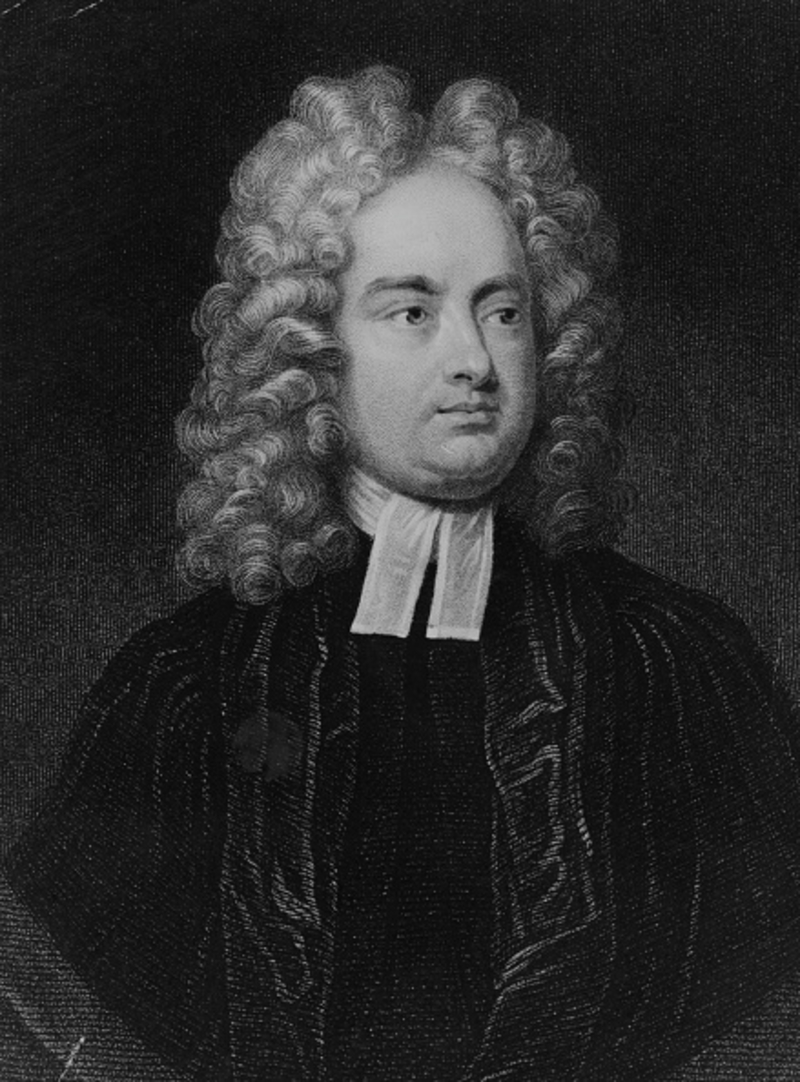
Swift worked alongside his muse Esther Johnson (nicknamed Stella by the writer) for most of his life. The nature of their relationship is unclear and has been speculated about since they were both among the living. Johnson basically lived in Swift’s house and there have been rumors that the two were secretly married. If that was the case, it is not clear why it was kept a secret, but we will probably never know.
The Real Swift and Stella
Forensic anthropologists Human Remains Services Ireland and Dr. Christopher Rynn of the University of Dundee reconstructed what Swift and Johnson looked like before they died. In order to recreate their faces, they used diagnostic imaging, 3D facial reconstruction, 3D printing, and other forensic techniques. Swift’s image was easier to reconstruct because, in addition to the many portraits of the author, there were also his death mask and skull. Johnson was more of a challenge, but a cast of her skull was ultimately found and used.
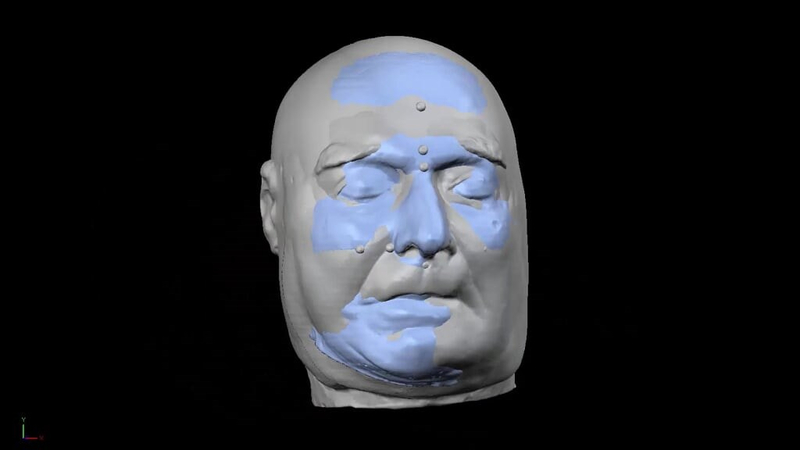
The casts of both skulls are currently on display in Dublin. Swift’s is housed at St. Patrick’s Cathedral and Johnson’s resides in the adjacent Archbishop Marsh’s Library. Due to the fashion of the times, it is no surprise that Swift looks quite different than his public portraits, but this is the first opportunity for the world to get a glimpse of what Esther ‘Stella’ Johnson may have looked like.
St. Valentine
The 3rd century Roman saint of courtly love is well known for the holiday named after him which takes place every February 14th and makes us all make a frantic dash to the supermarket for some last-minute chocolate and flowers. But the real St. Valentine was a clergyman who cared for persecuted Christians. He was martyred and his remains were buried at a Christian cemetery in the north of Rome, on February 14, which has been observed as the Feast of Saint Valentine, the basis of the modern holiday.
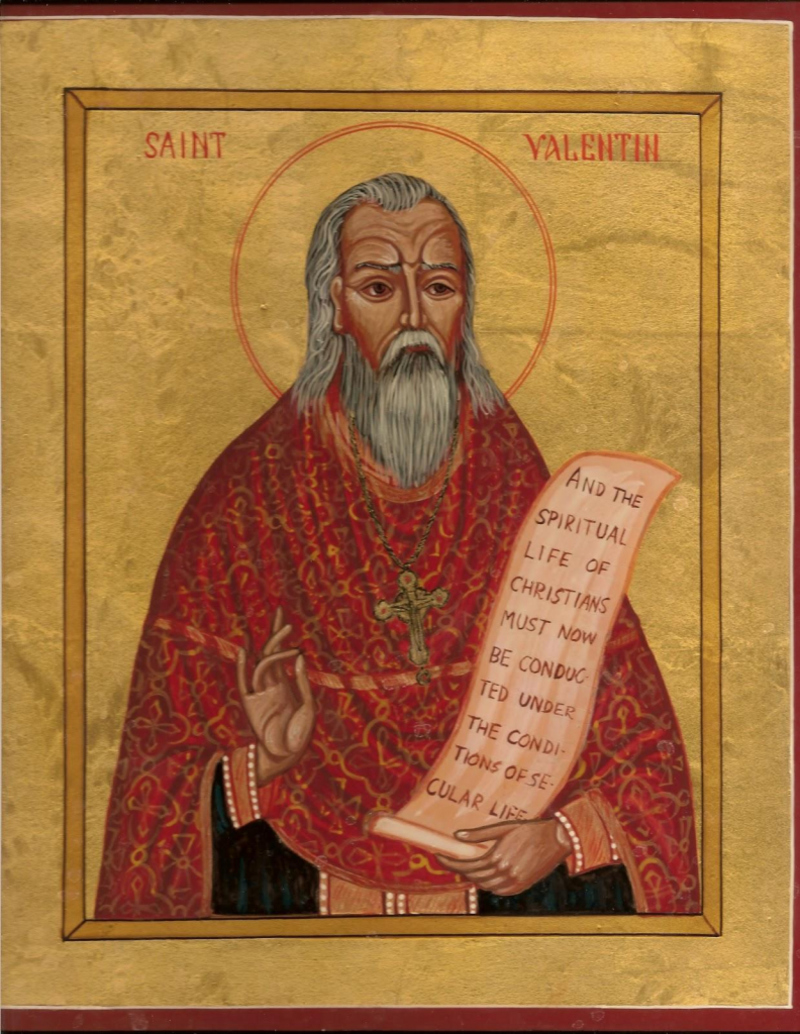
There are some romantic aspects to the life of the saint. He performed secret marriage ceremonies after they were banned by Emperor Claudius II. The emperor believed that if he kept young men from marrying and having children, he would have more soldiers for his army. Marriage ceremonies, especially Christian ones were still new, and Valentine was caught, imprisoned, and tortured. There is a legend that Valentine fell in love with the jailer’s daughter and before he died left her a note that was signed ‘from your valentine’.
500-Year-Old Dubliner
In 2014, the remains of a man who died roughly 500 years ago were discovered near the entrance to Trinity College in Dublin. The man was found with four other skeletons, all of which showed signs of having engaged in heavy manual labor and suffered from childhood malnutrition, suggesting they came from poor families. Archaeologists from Rubicon Heritage and Transport Infrastructure Ireland ascertained that the skeletons were from the period of Tudor Ireland, between 1485 and 1603.

This kind of facial reconstruction, which is done to ordinary people and not to the wealthy or famous, is providing archaeologists with a new way to learn about parts of the population that up to now have been almost completely unrepresented in historical documentation or through art.
Exceedingly Ordinary
The skull of the man, only known as SK2, was in excellent condition which led Caroline Wilkinson and her team from Liverpool John Moore’s University’s Face Lab to take on a 3D digital facial reconstruction. The skeletal analysis suggested that the man was between 25 to 35 years of age when he died and was 5’6″ tall. Isotopic analysis of his teeth indicated that he was from Dublin, where he was also buried.

Wilkinson’s team used these findings and also a review of illustrations made of 16th-century Irish people to adjust the face. They added a beard, long hair, and characteristic Irish features like fair skin, brown hair, and blue eyes. The clothing they chose for SK2 was simple and unadorned, as befitting his social stature. In the end, the man looks so ordinary, we would not be surprised to see him walk the streets of Dublin today.
“Hilda” the Druid Priestess
An ancient Druid Priestess nicknamed “Hilda” was delivered in 1833 to the Phrenological Society of Edinburgh as one of the skulls of six “Druids of the Hebrides”. Although carbon dating of the skull has not been possible, the notes that came with the skull state that the woman died between 55 BC to 400 AD and that she was almost unheard of at the time 60 years old.
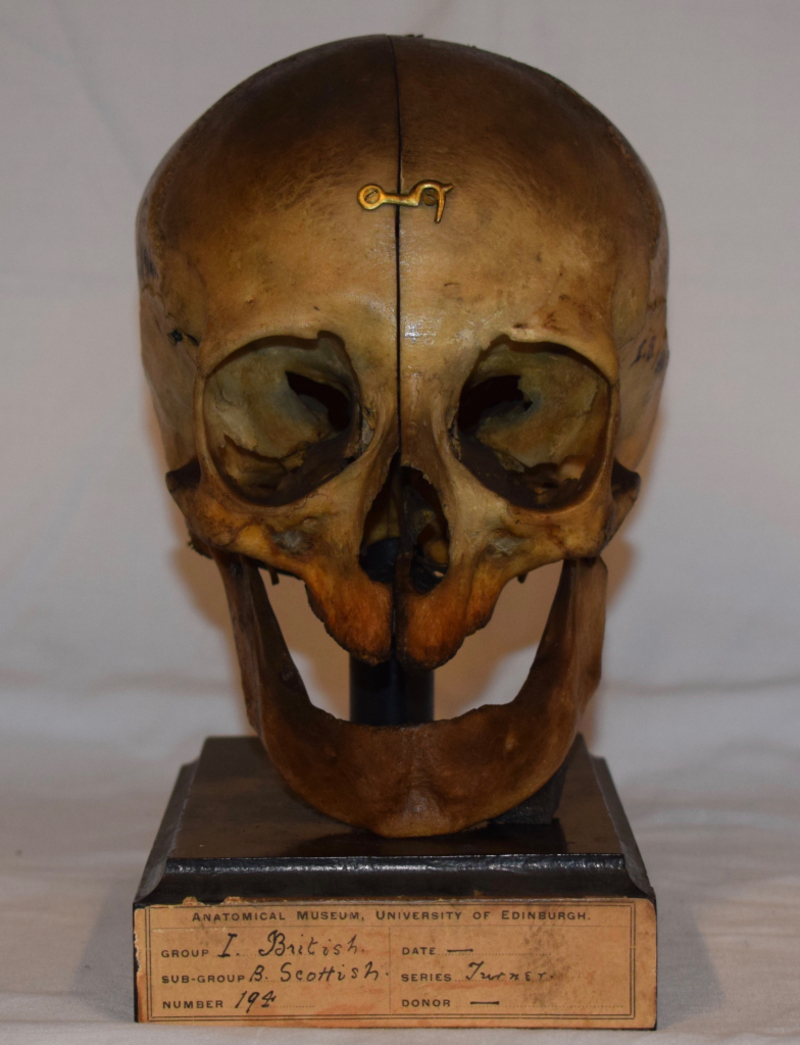
It is believed that Hilda spent her life on the Isle of Lewis in the Outer Hebrides off the northern coast of Scotland near the modern town of Stornoway. It is clear from her skull that she had lost all of her teeth before death and the fact that she lived long enough to do so may reveal that she was wealthy or from a privileged background. Women at the time only had an average life expectancy of roughly 30 years.
The Magic of Her Reconstruction
Hilda was most likely a Druid, an ancient priestess or conjurer of magic in the Iron Age British Isles. According to experts, the term “Druid” can have many meanings but usually refers to a person that is considered an expert in magic or religion. It is not clear as of yet exactly what Hilda’s position was although experts claim that women Druids at the time mostly held ceremonial roles with no real power.
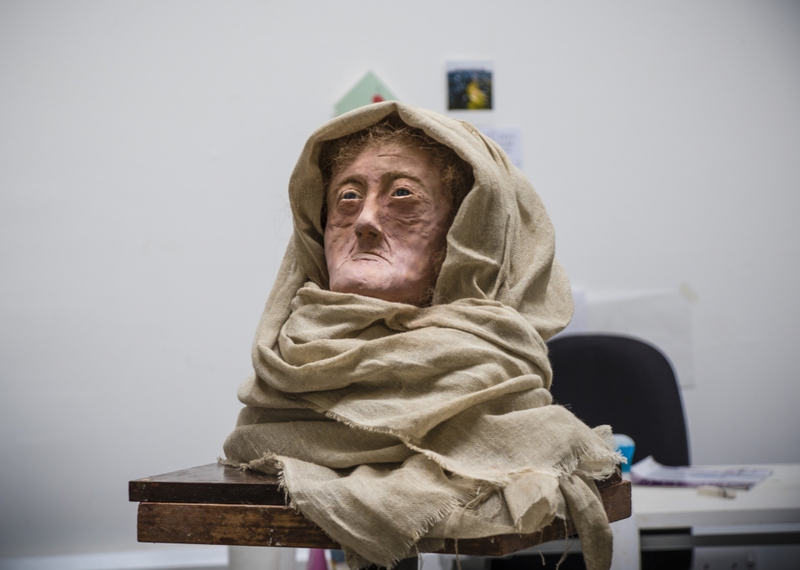
We have Scottish Graduate student Karen Fleming to thank for the glimpse into Hilda’s face. Fleming, who studied Forensic Art and Facial Identification at the University of Dundee, created a 3-D wax model of the priestess’s face using information obtained by scanning her skull. She then added the facial muscles and skin and finally put on the actual face. Fleming is very pleased with the result and says, “I think she looks like many older women I’ve met in my life and I’m proud of that.”
Medieval Knight
A skeleton that was discovered at Stirling Castle is believed to be the remains of an English knight that was killed in the 14th Century. The skeleton, which was found with ten others, was investigated by forensic anthropologist Professor Sue Black and her team from the University of Dundee. The knight most likely died from an arrow wound that was inflicted by the Scots.
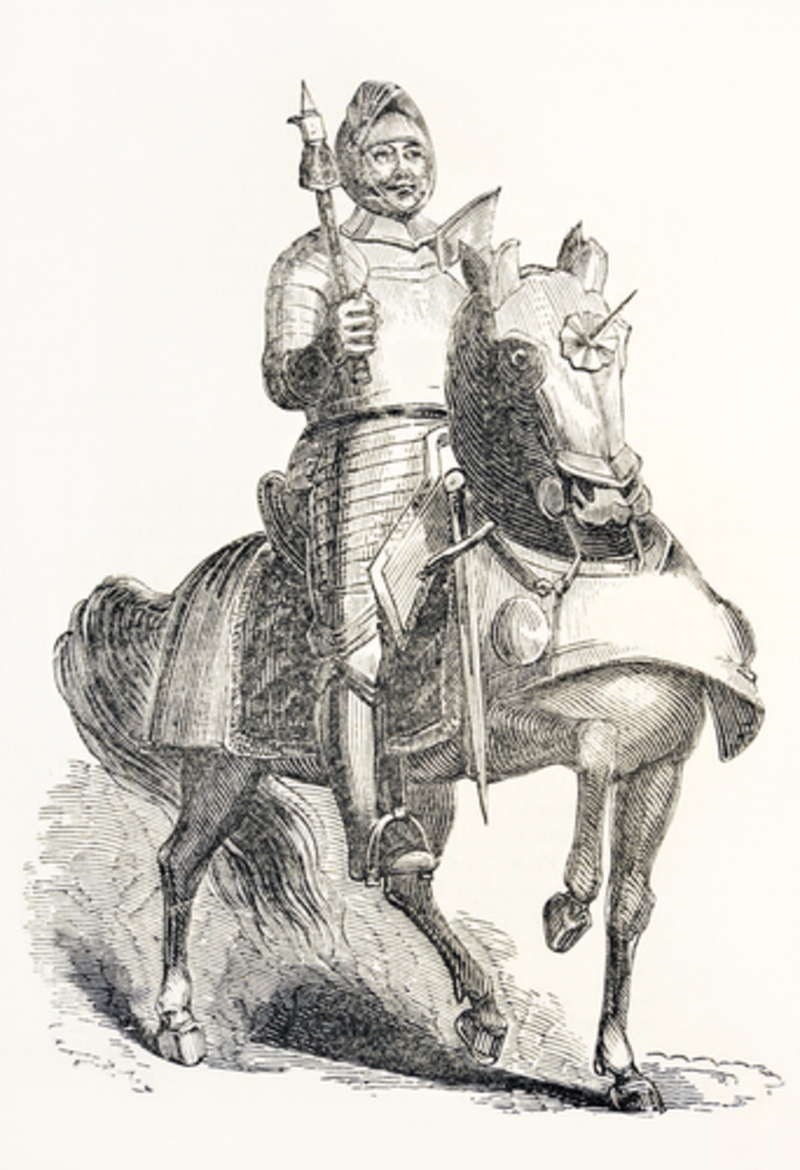
There is speculation that the knight may, in fact, be Sir John de Stricheley, who died in 1341, while the English held the castle. Documents that were found by the team suggest that Sir John, a Buckinghamshire lord, was a senior member of the garrison. His death occurred on 10 October 1341 and his family line has since died out.
A Knightly Visage
A forensic examination of the knight’s bones reveals that he was 5ft 7in tall, most likely grew up in southern England, and was a seasoned combat veteran, with signs of severe injuries from previous battles. His age at the time of death was apparently some time in his mid-20s.
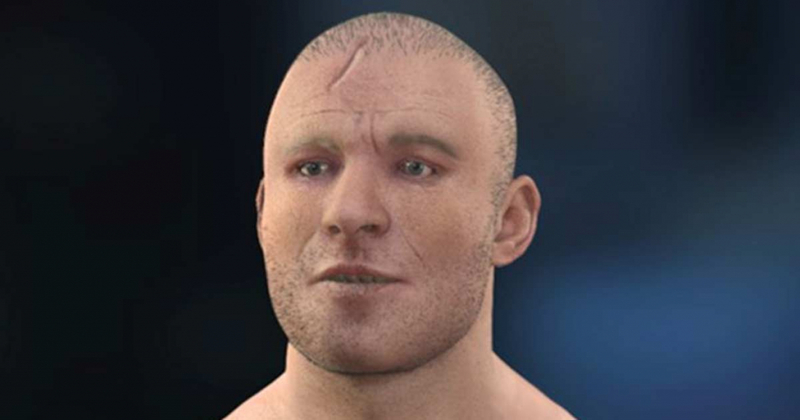
The reconstruction revealed that he was strong and fit with the physique of a rugby player. That does look like the tough and battle-ready face that we would expect from a knight.
Mary Rose Archer
The Mary Rose was a carrack-type warship belonging to King Henry VIII’s English Tudor navy. The ship was in use for 33 years and saw action in wars against France, Scotland and Brittany.

On July 19th, 1545, the Mary Rose led the attack of an invading French fleet but sank in the straits north of the Isle of Wright. The cause of the sinking is unknown to this day.
The Face of An Archer
500 years after drowning aboard Henry VIII’s flagship, the Mary Rose, scientists have been able to give us a glimpse of the legendary ship’s archer. The archer was found among 92 other skeletons in 1983 and identified by researchers at Swansea University by the repetitive stress injuries found on his body. His work as an archer had severely damaged his shoulder joints, twisted his spine, and caused grooves to appear inside of his right finger bone. He was found with an ivory wrist guard, a pewter plate, and a silver ring, which may imply that he held a high rank.

The archer was taller than most of the crew at 5ft 10in and had especially strong legs. A strong body was essential for an archer at the time because the 16th-century longbow had a draw of up to 90kg. The man’s skull was scanned by laser to create an exact replica using a 3D printer. It was then sent to forensic expert Oscar Nilsson, who specializes in reconstructing the faces of unidentified bodies for police investigations. Nilsson then built up the archer’s face to create the final image.

All In the Family. Hilarious and Heart Warming Family Moments

Yelling Down the Aisle: Beastly Bridezilla Stories — Part 2

Lagom: Swedish Tips For Life Balance

How to Live More Sustainably With Your Four-Legged Friends

Fresh vs. Dried Fruit, Which is Better for You?

Everything You Never Knew About Lucille Ball

The Greatest Westerns of All Time Part 2

60 Seconds of Fame – People Share Their Best Stories on Twitter

Then and Now: The Story of Raquel Welch
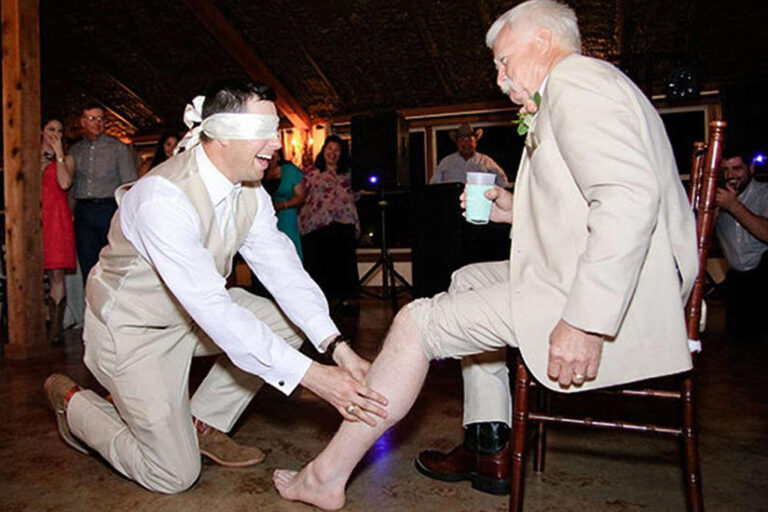
The Funniest Wedding Day Photo Fails Ever



